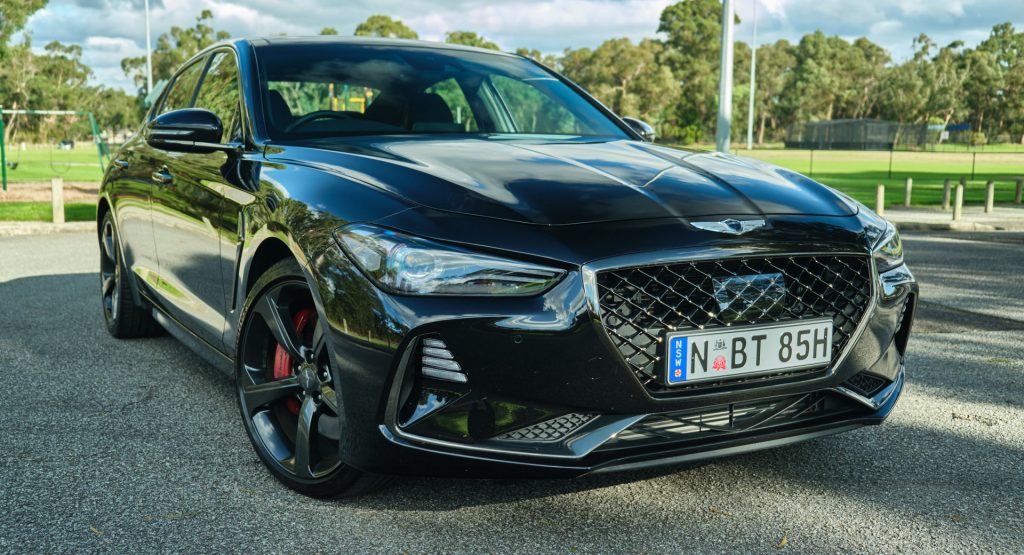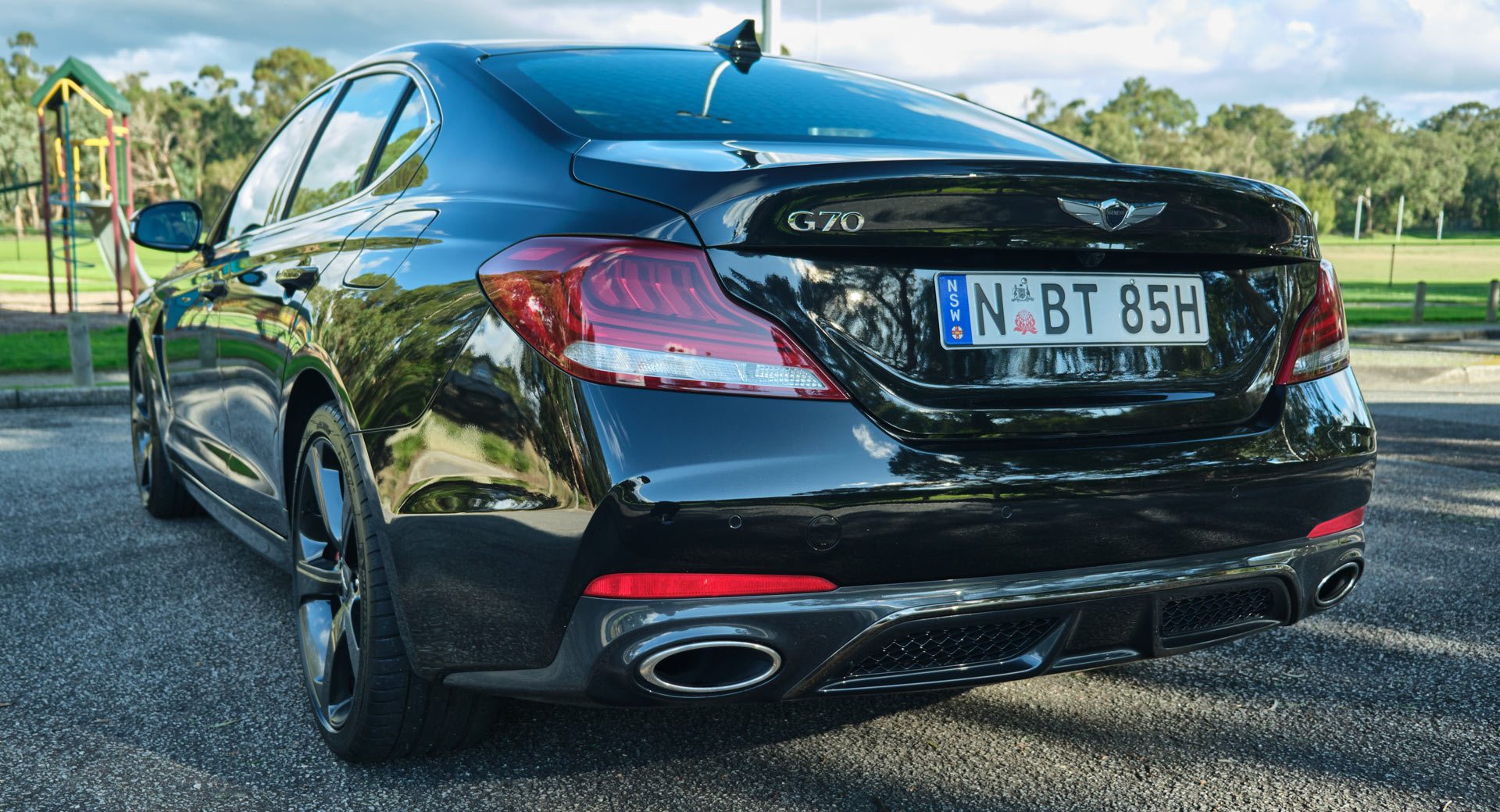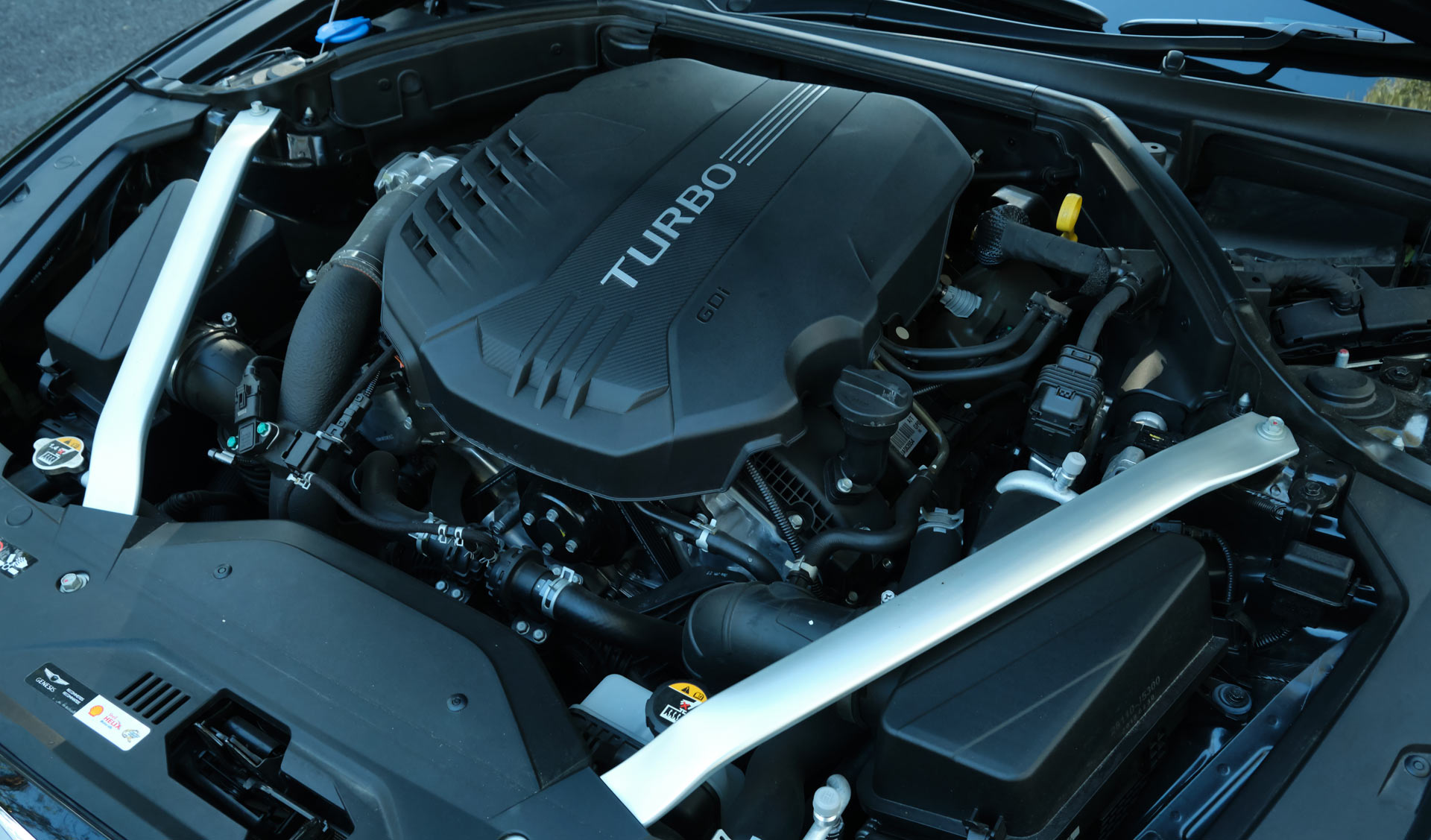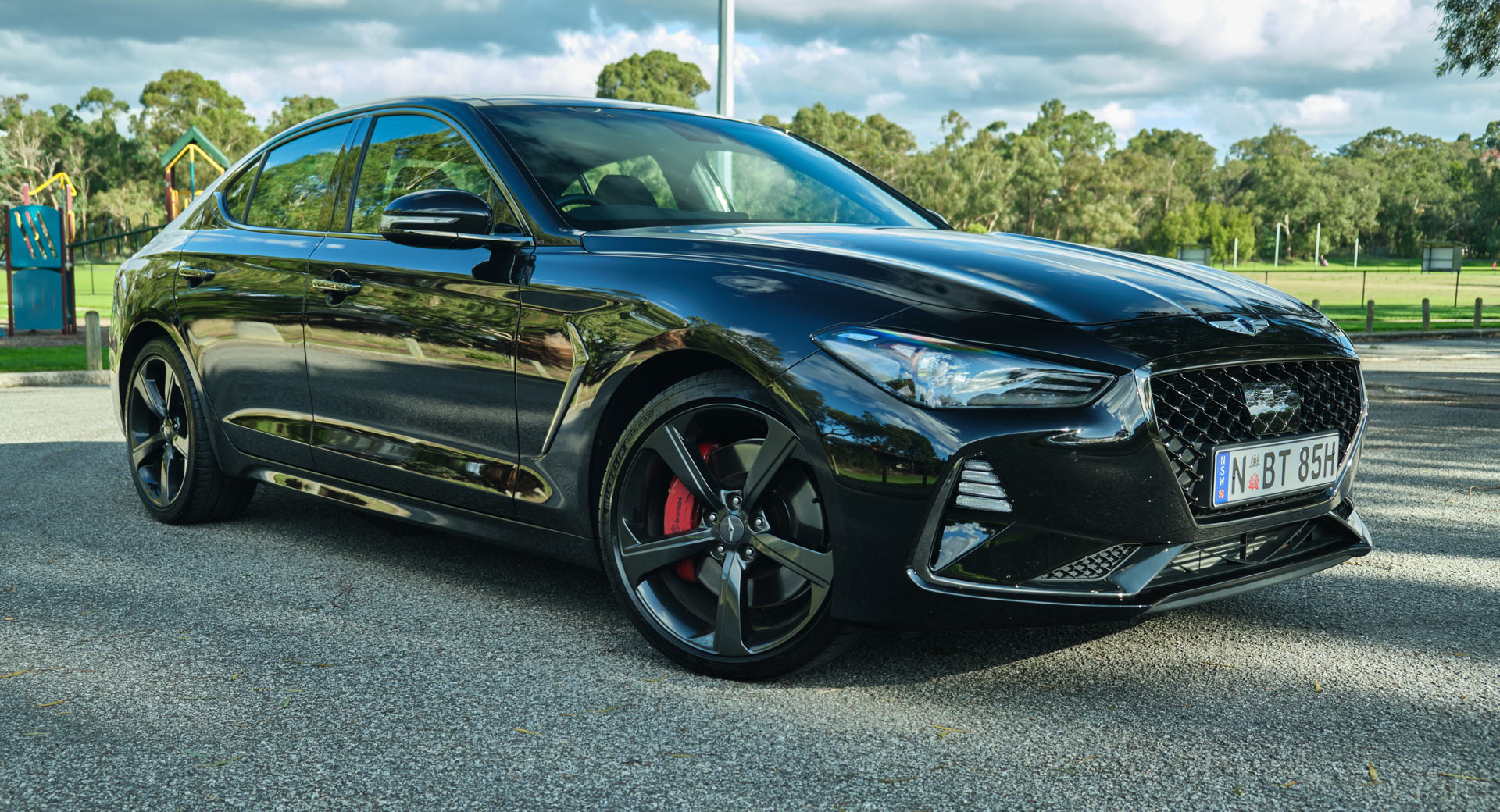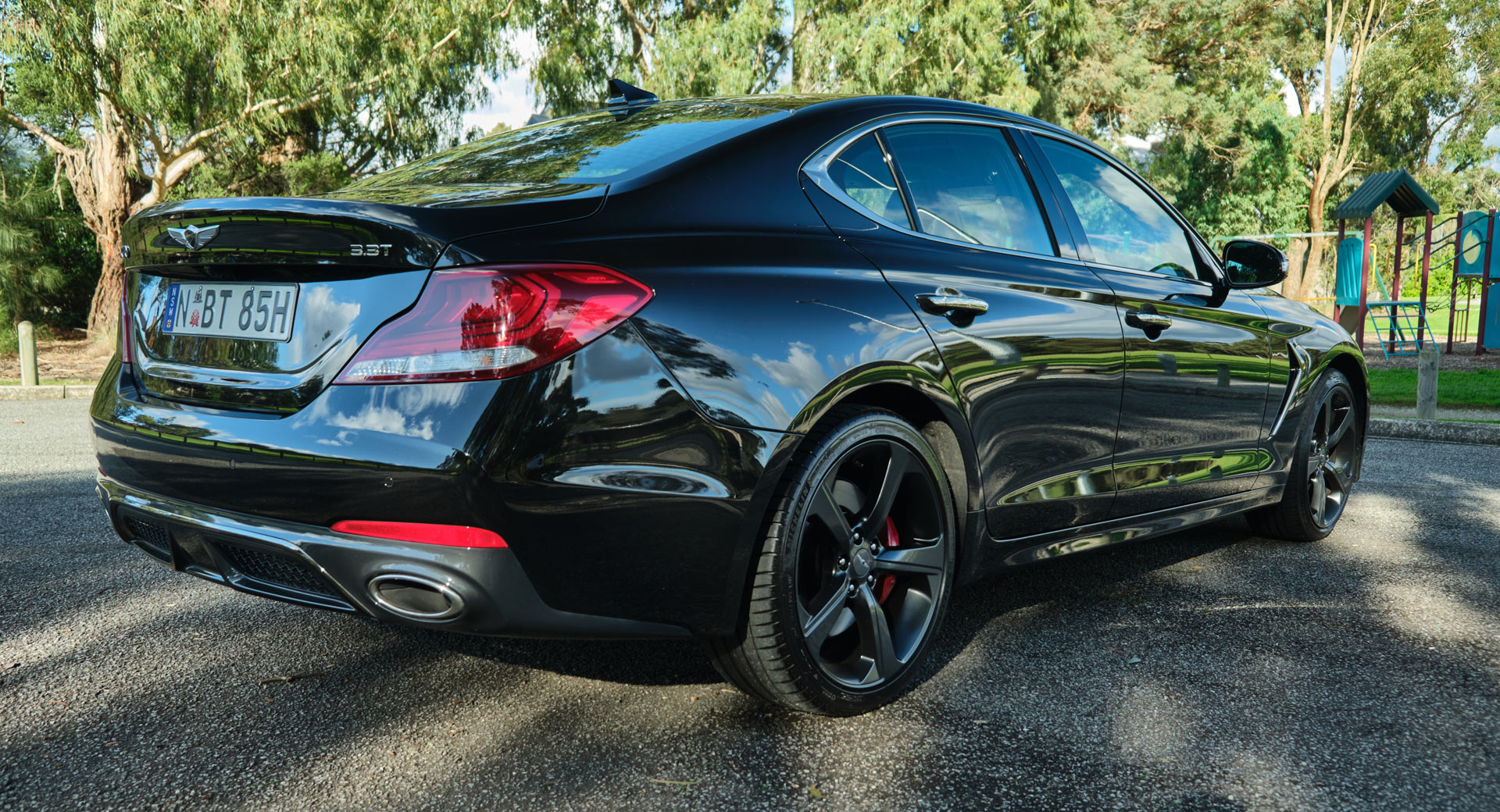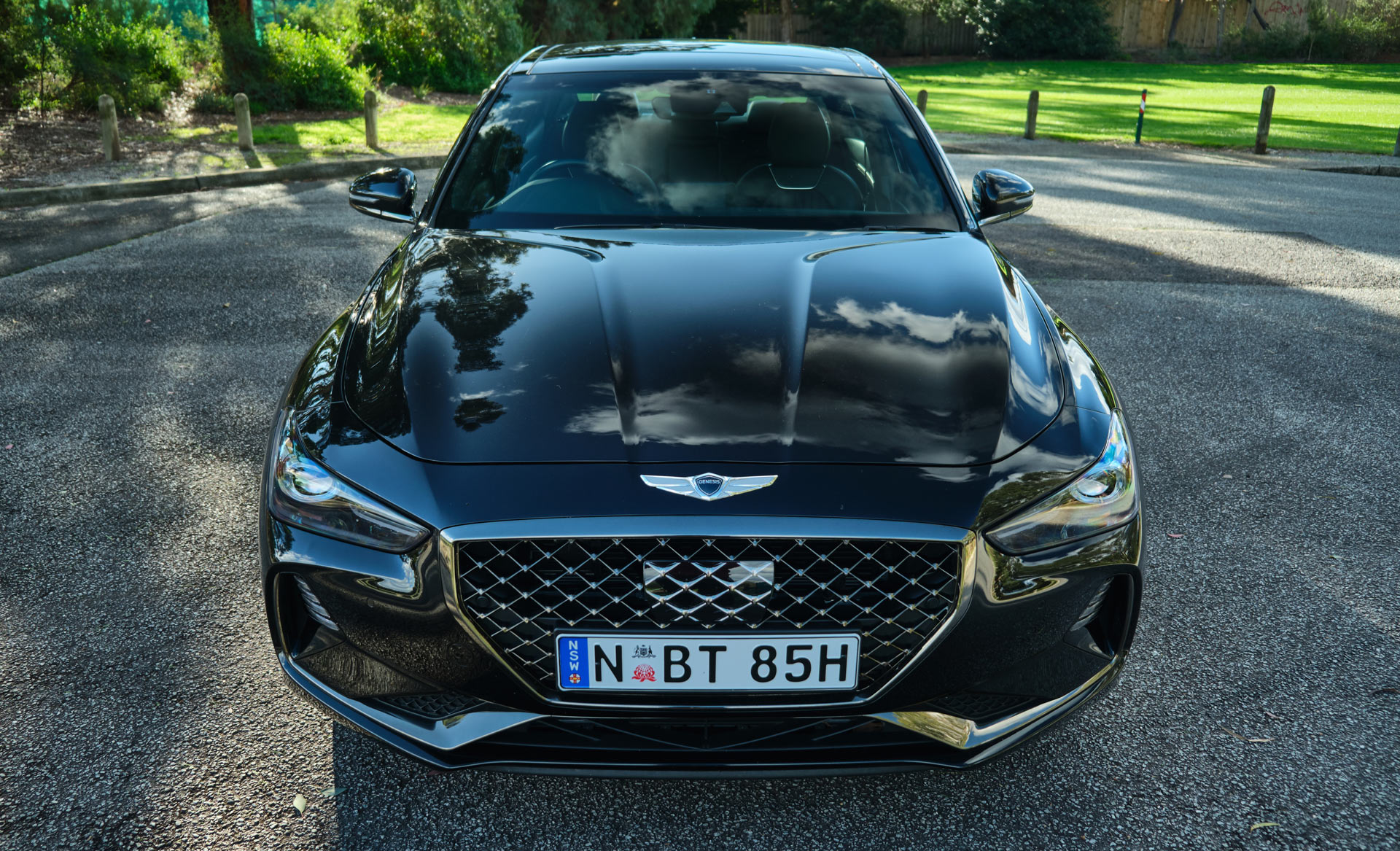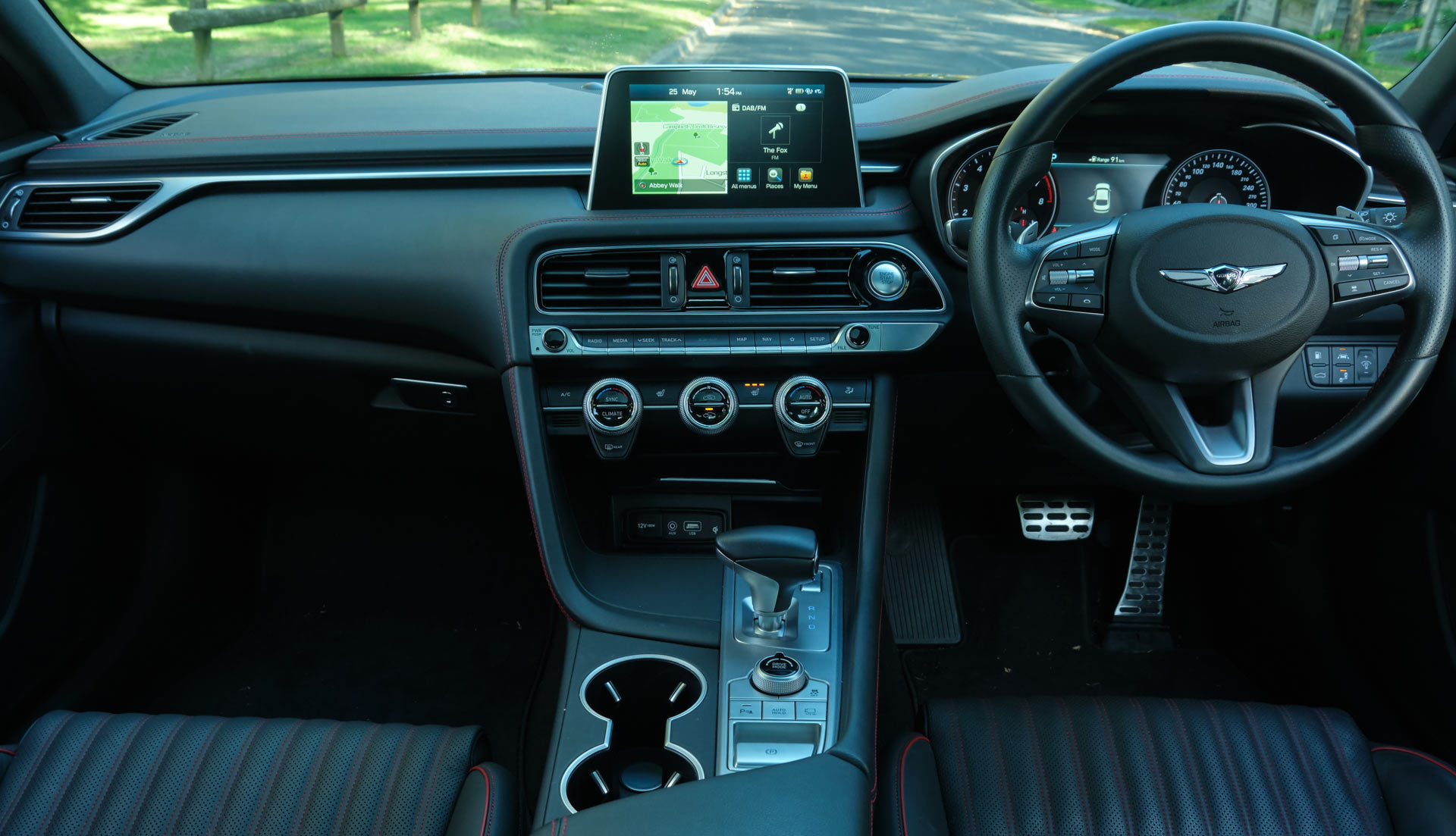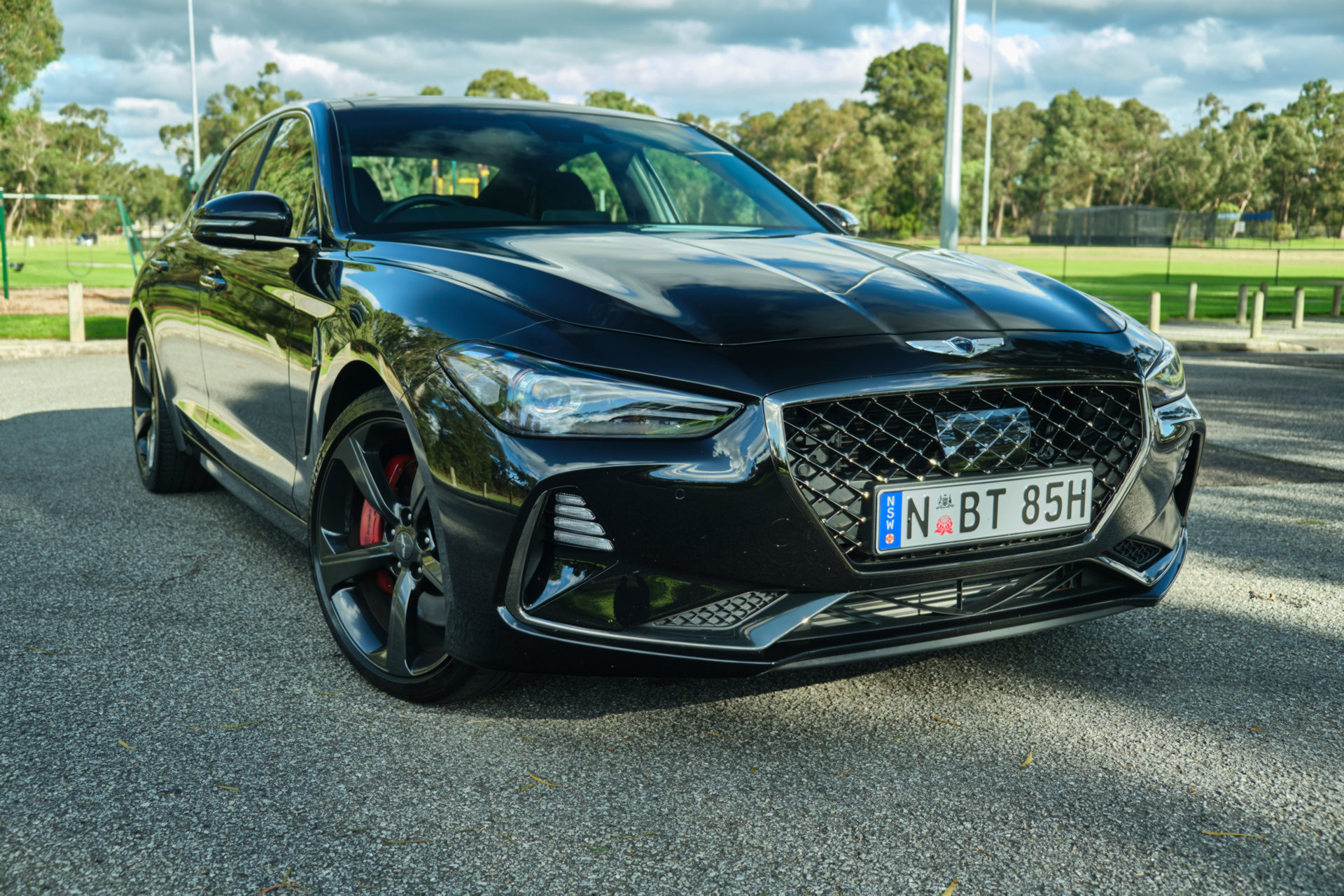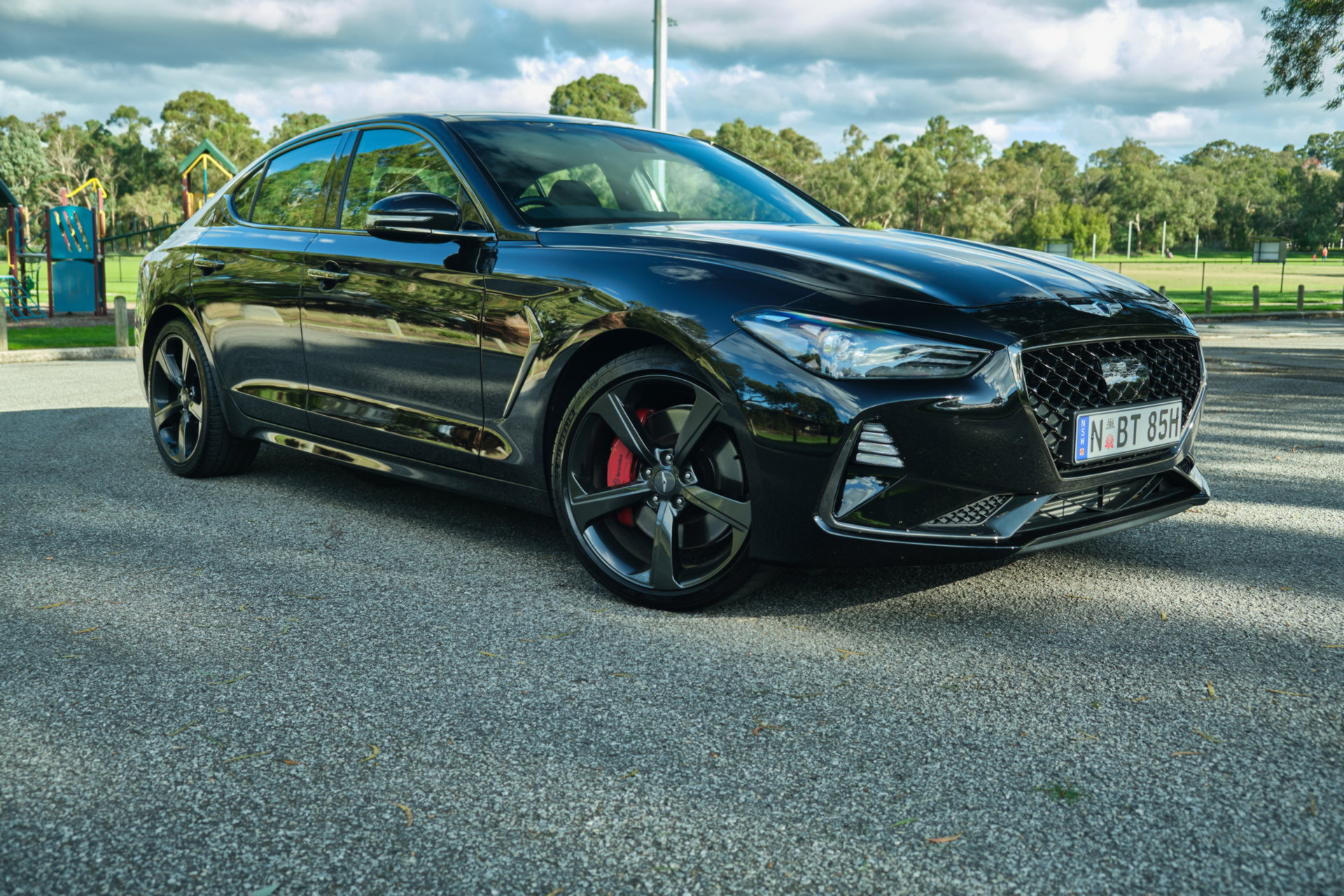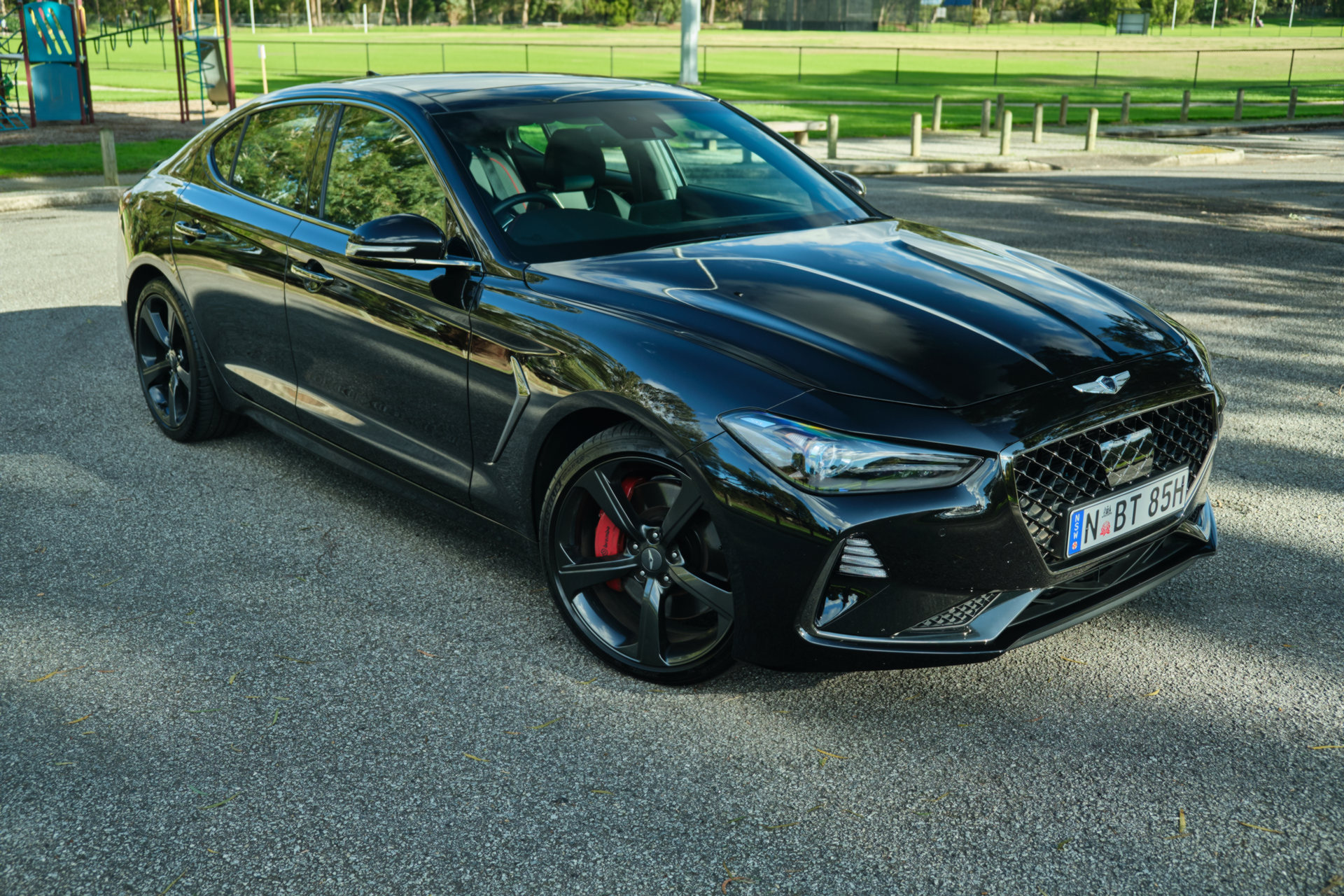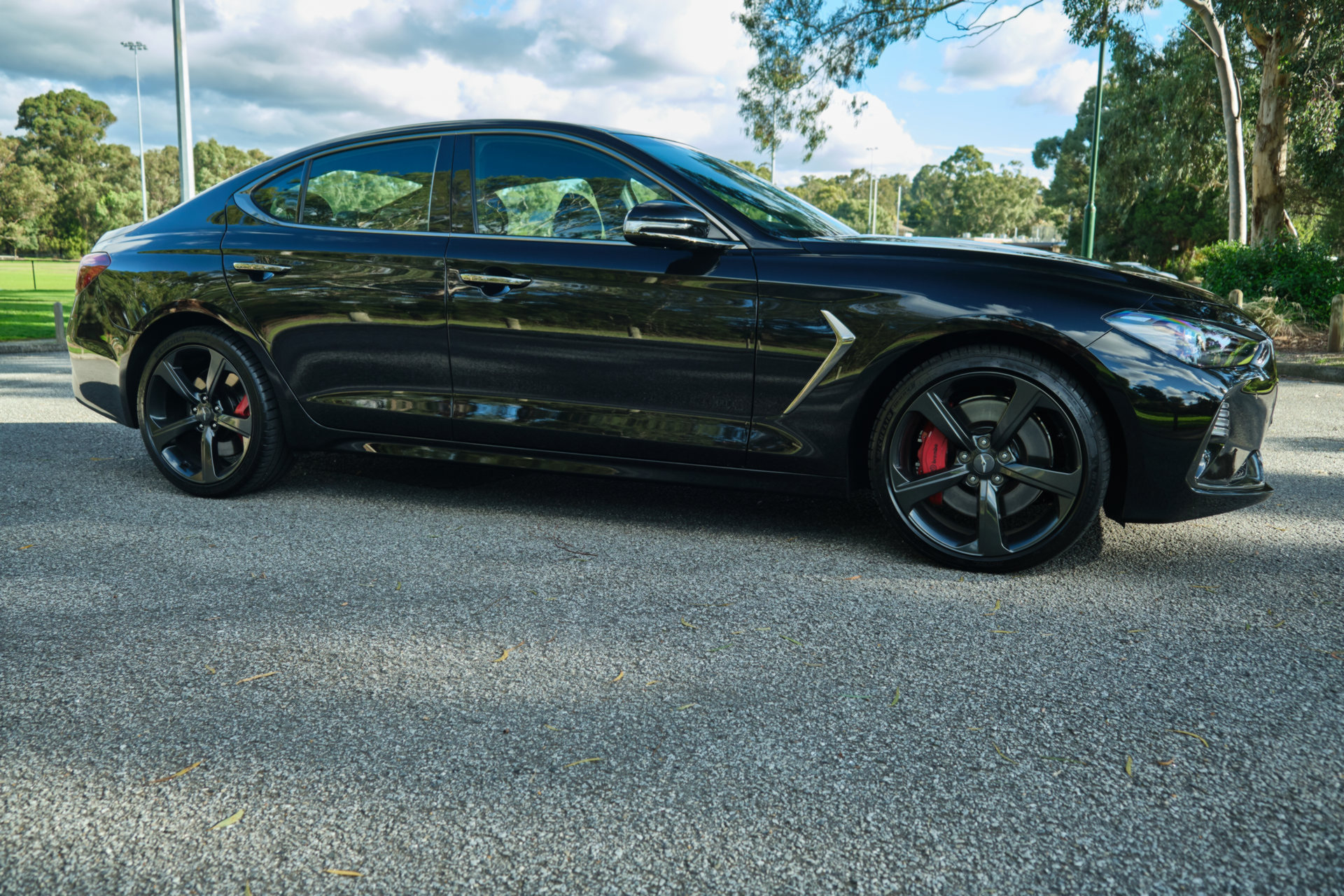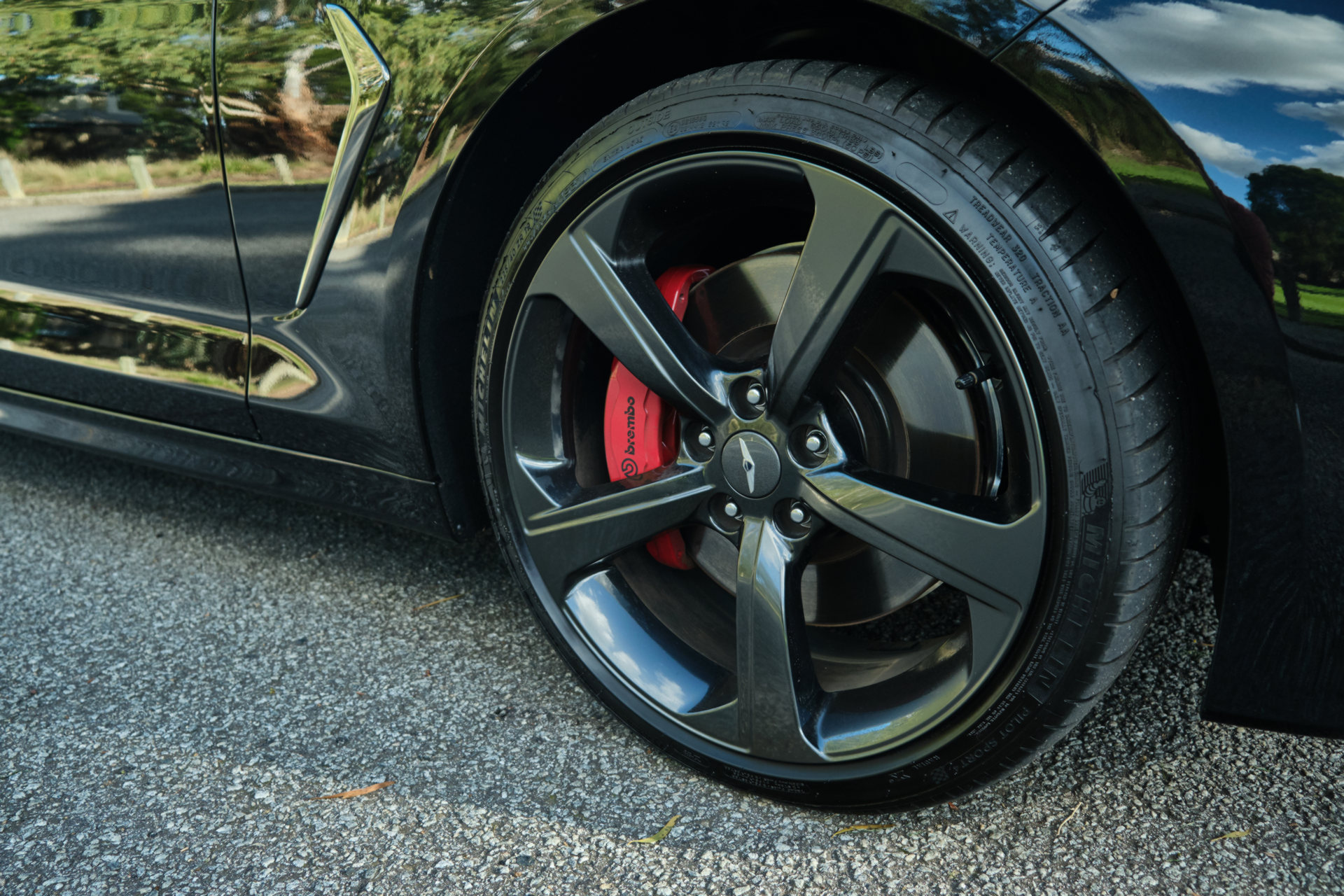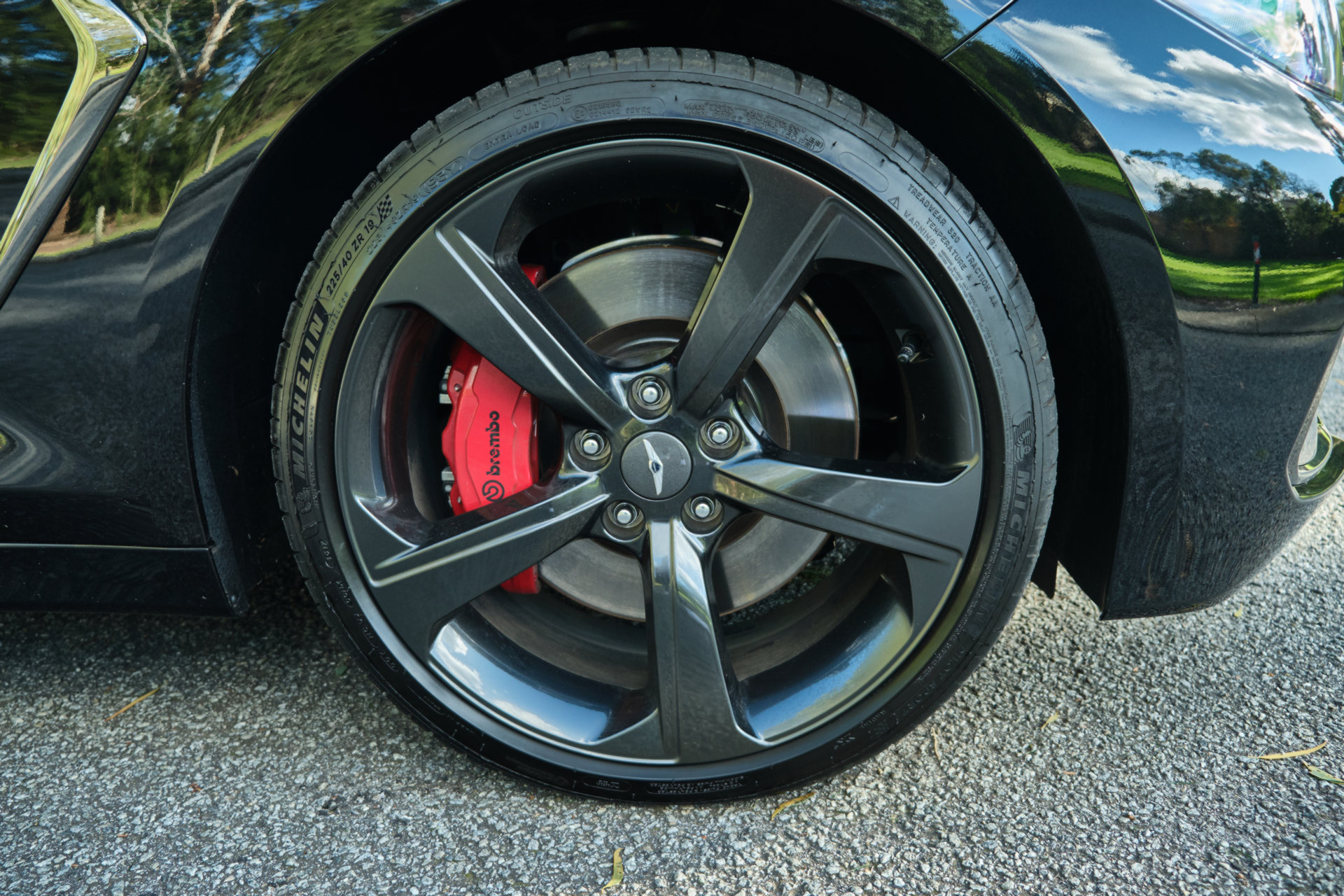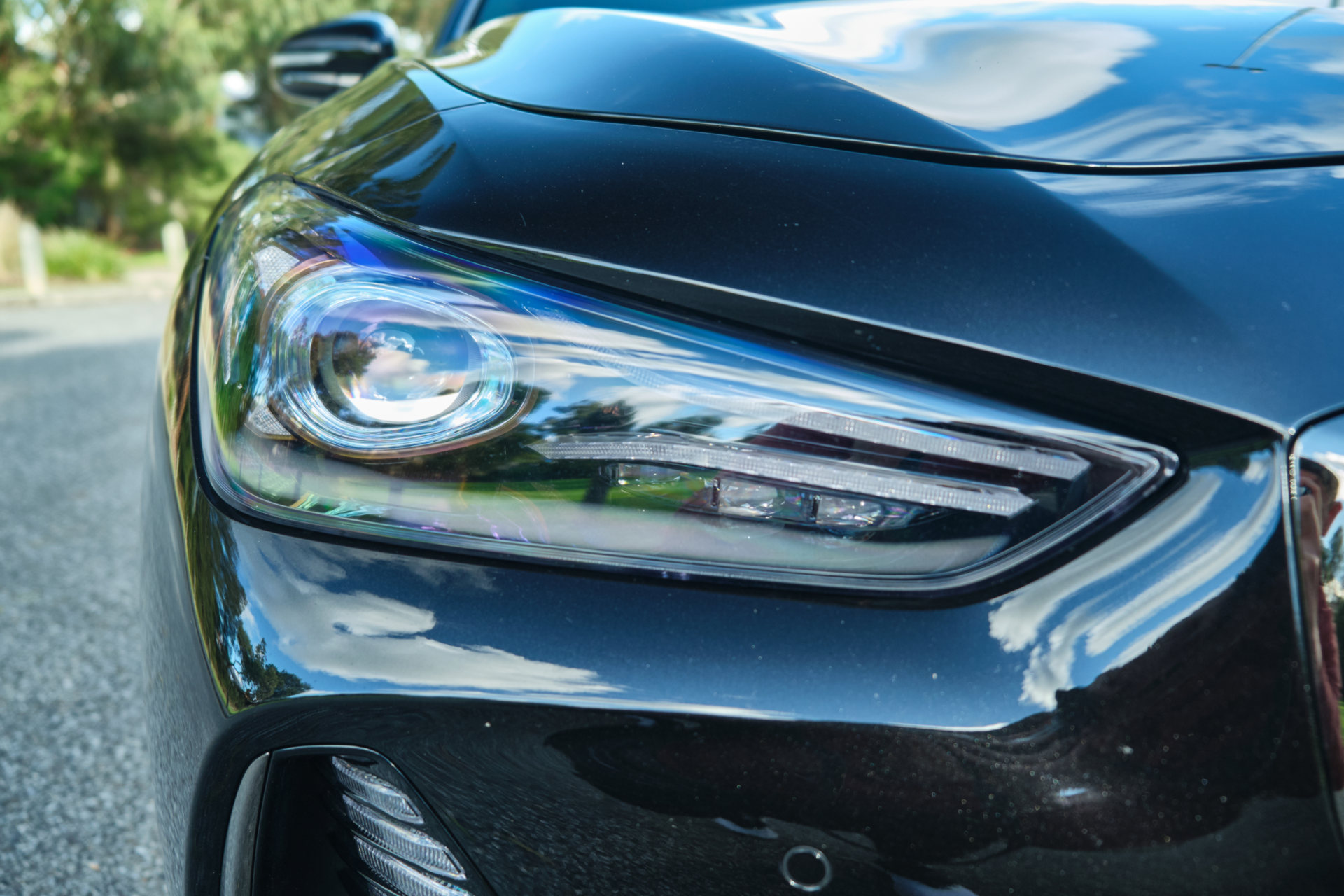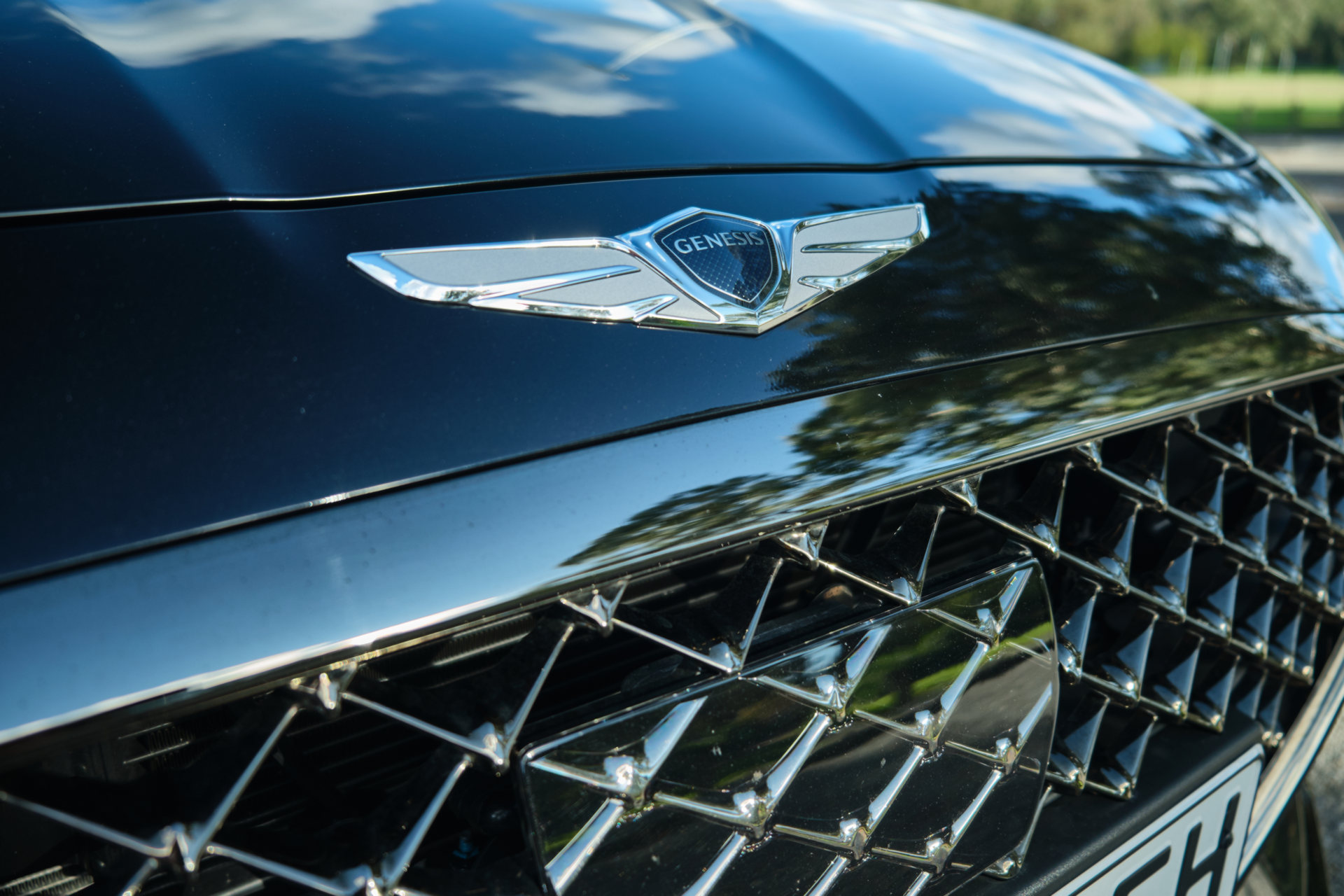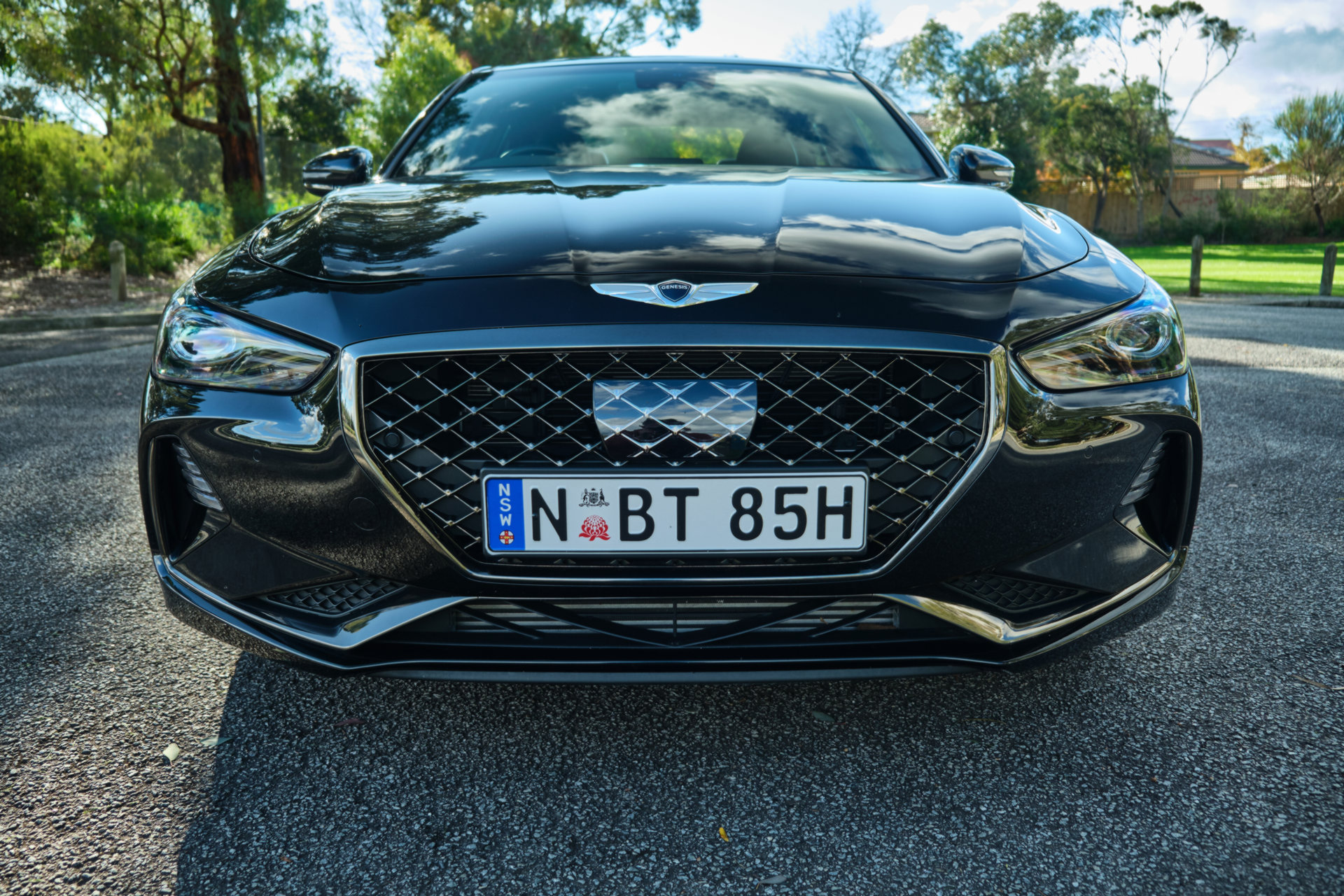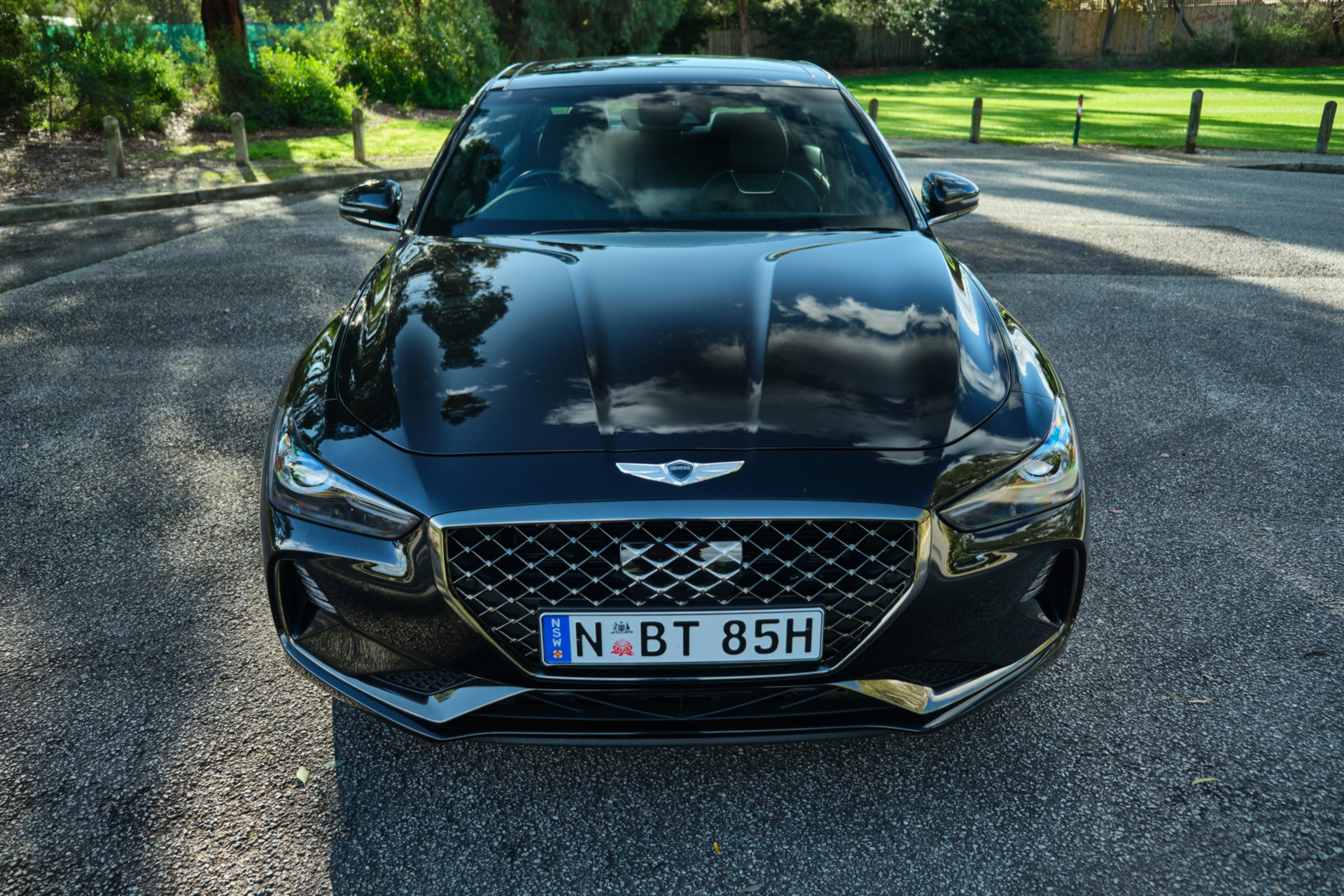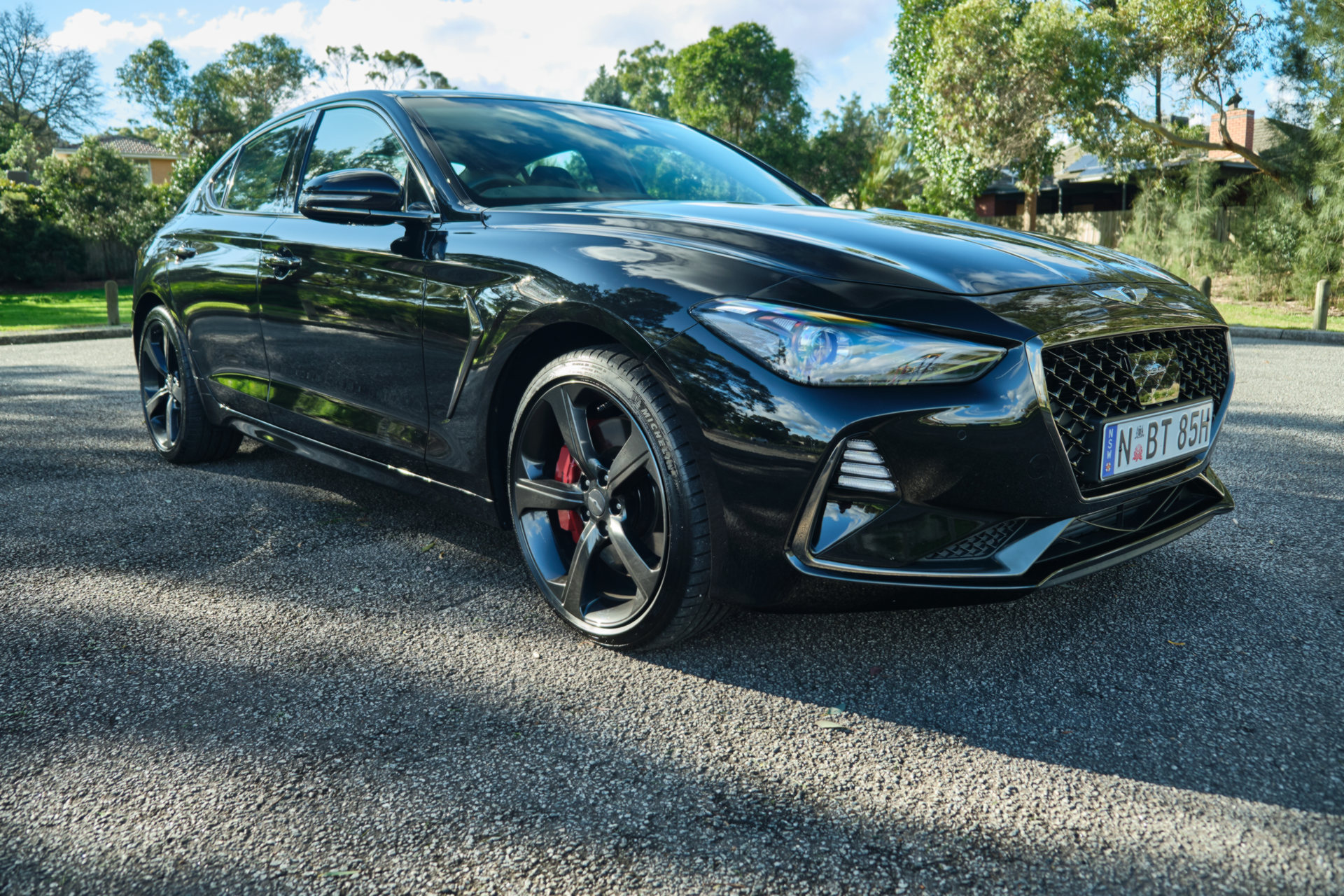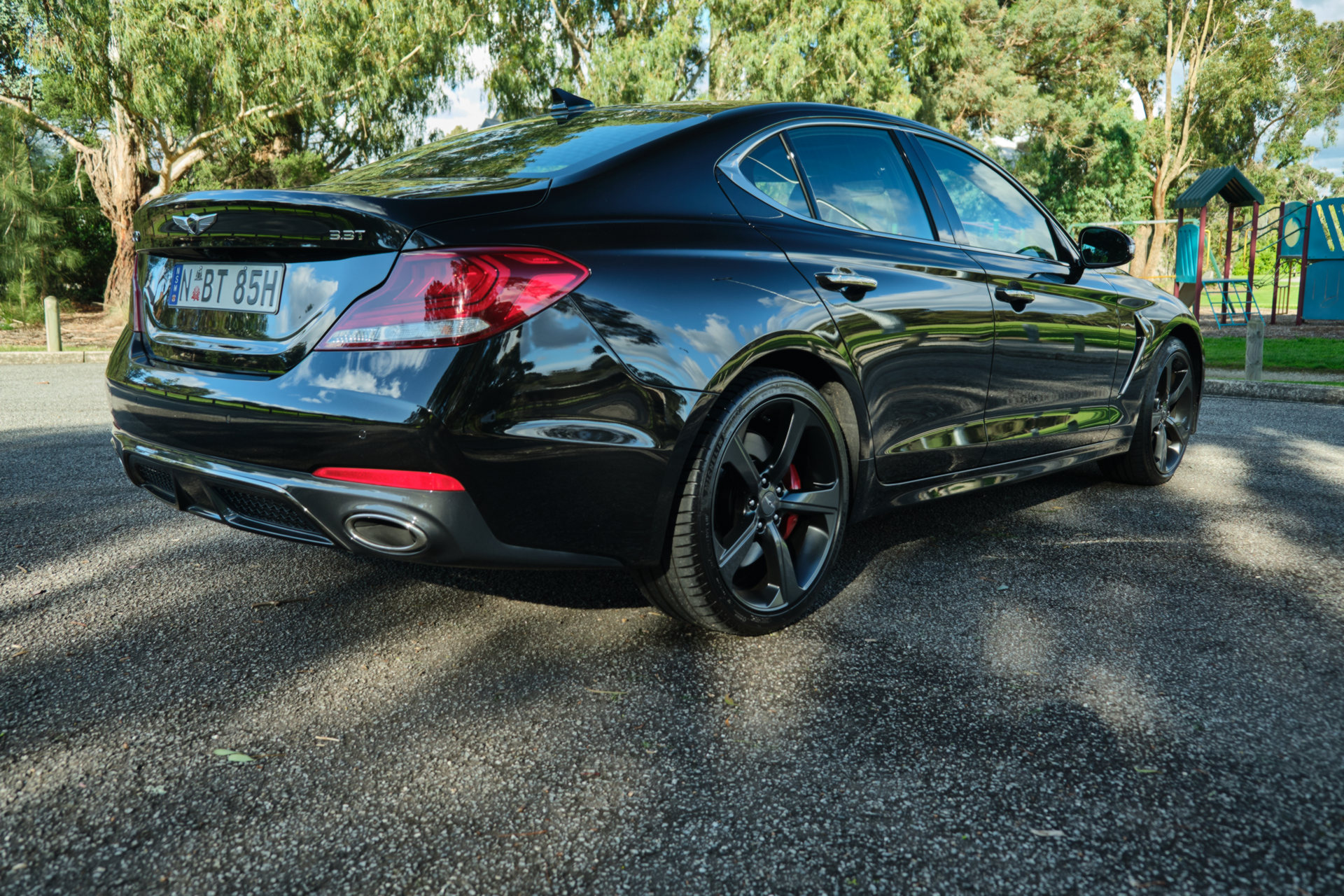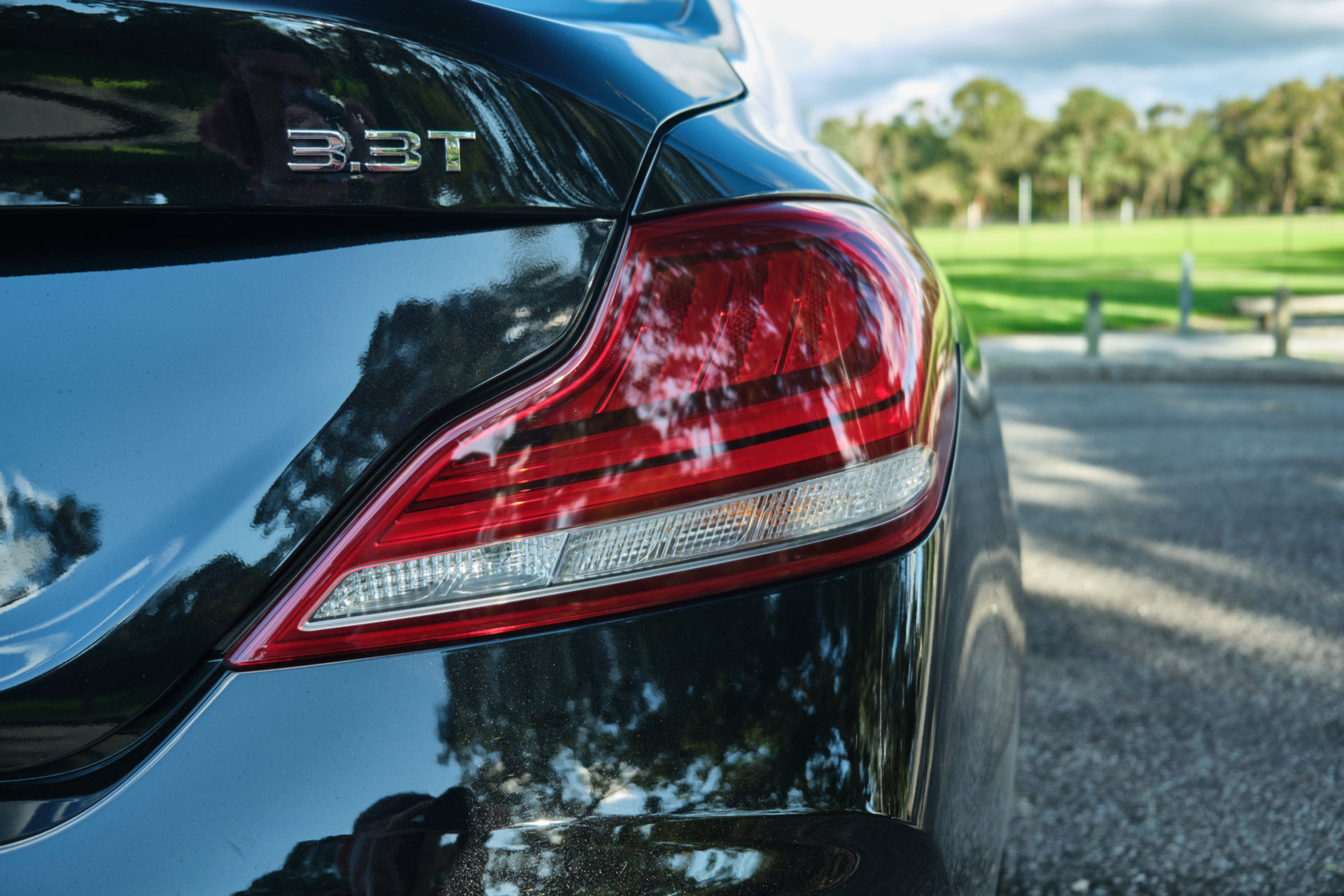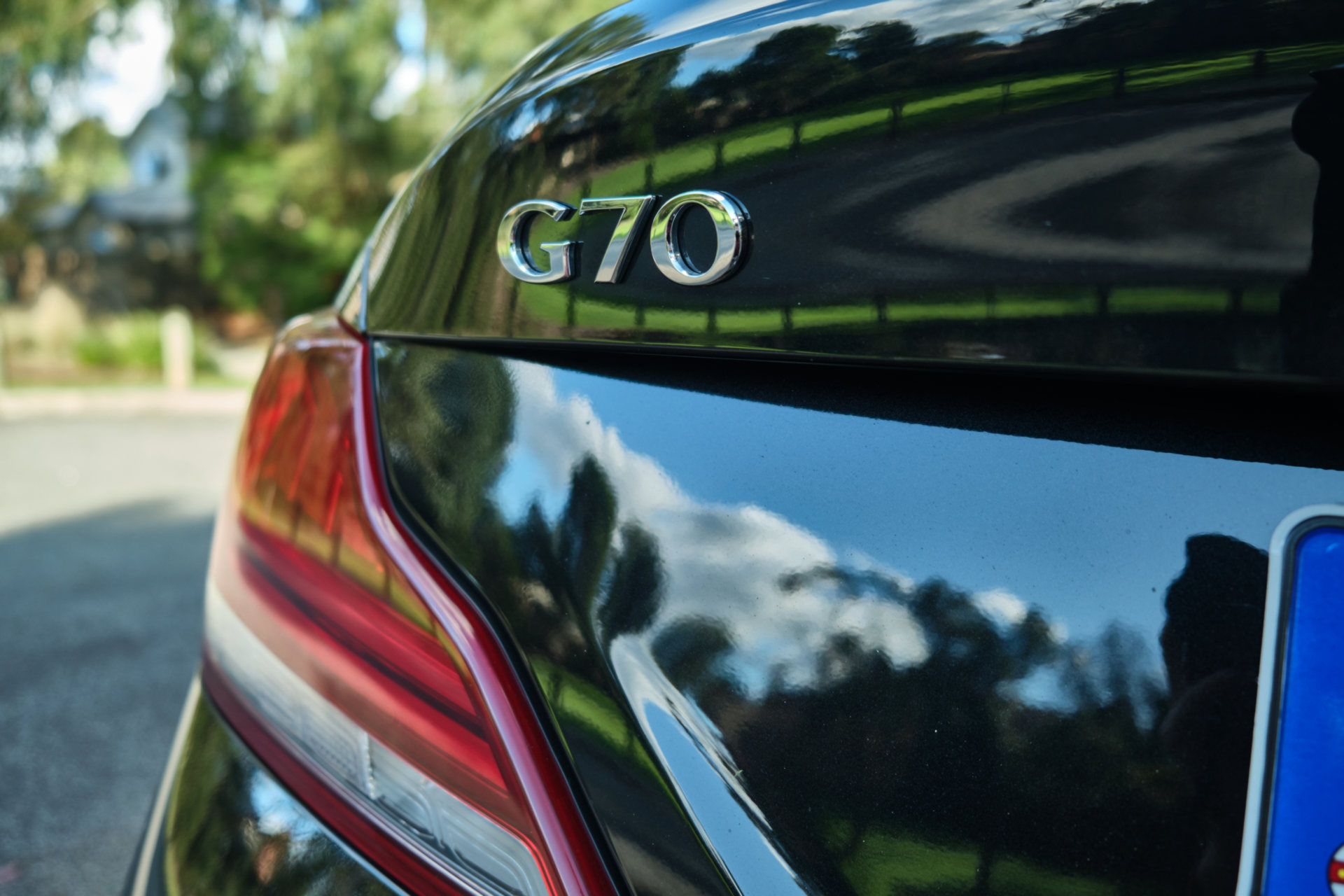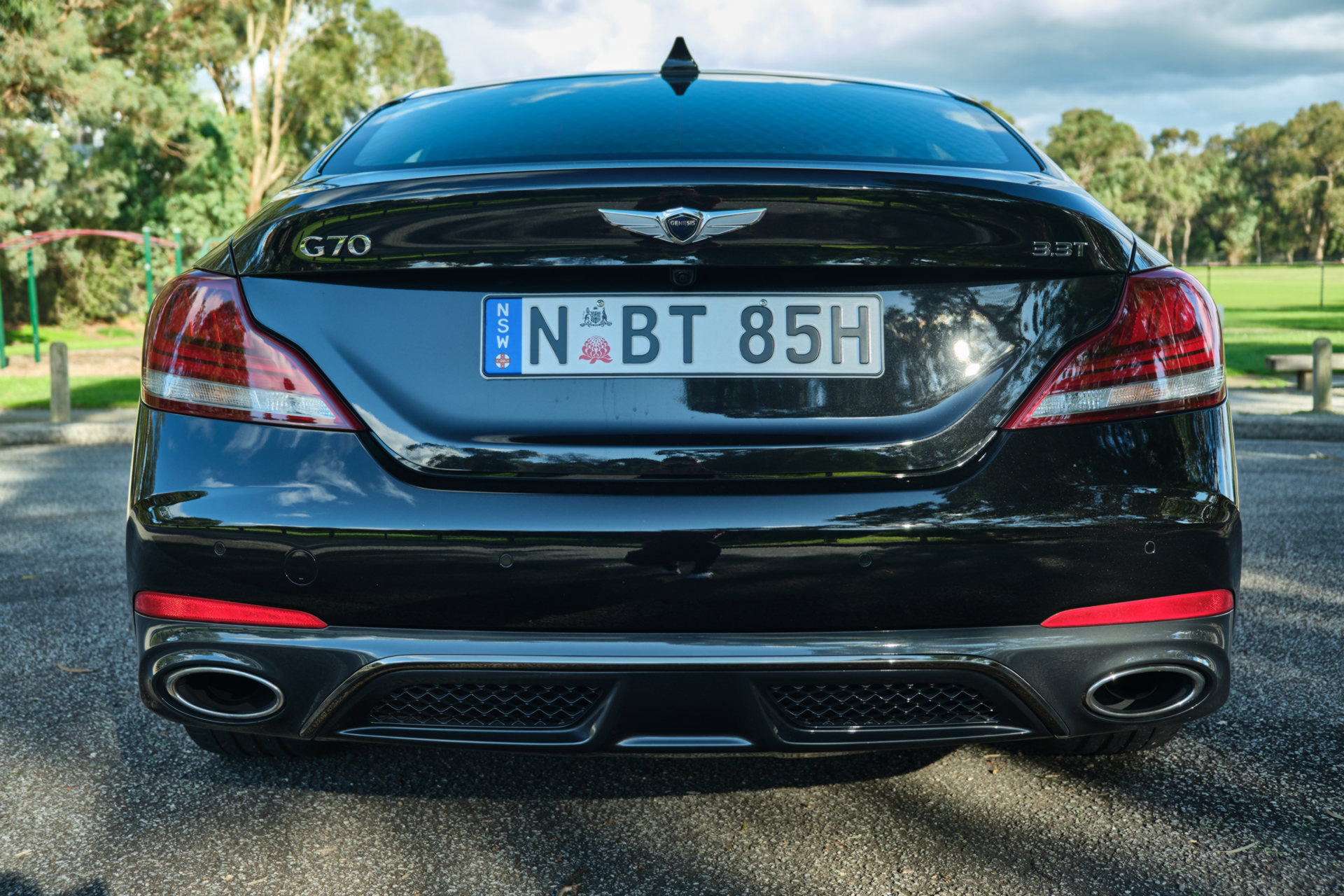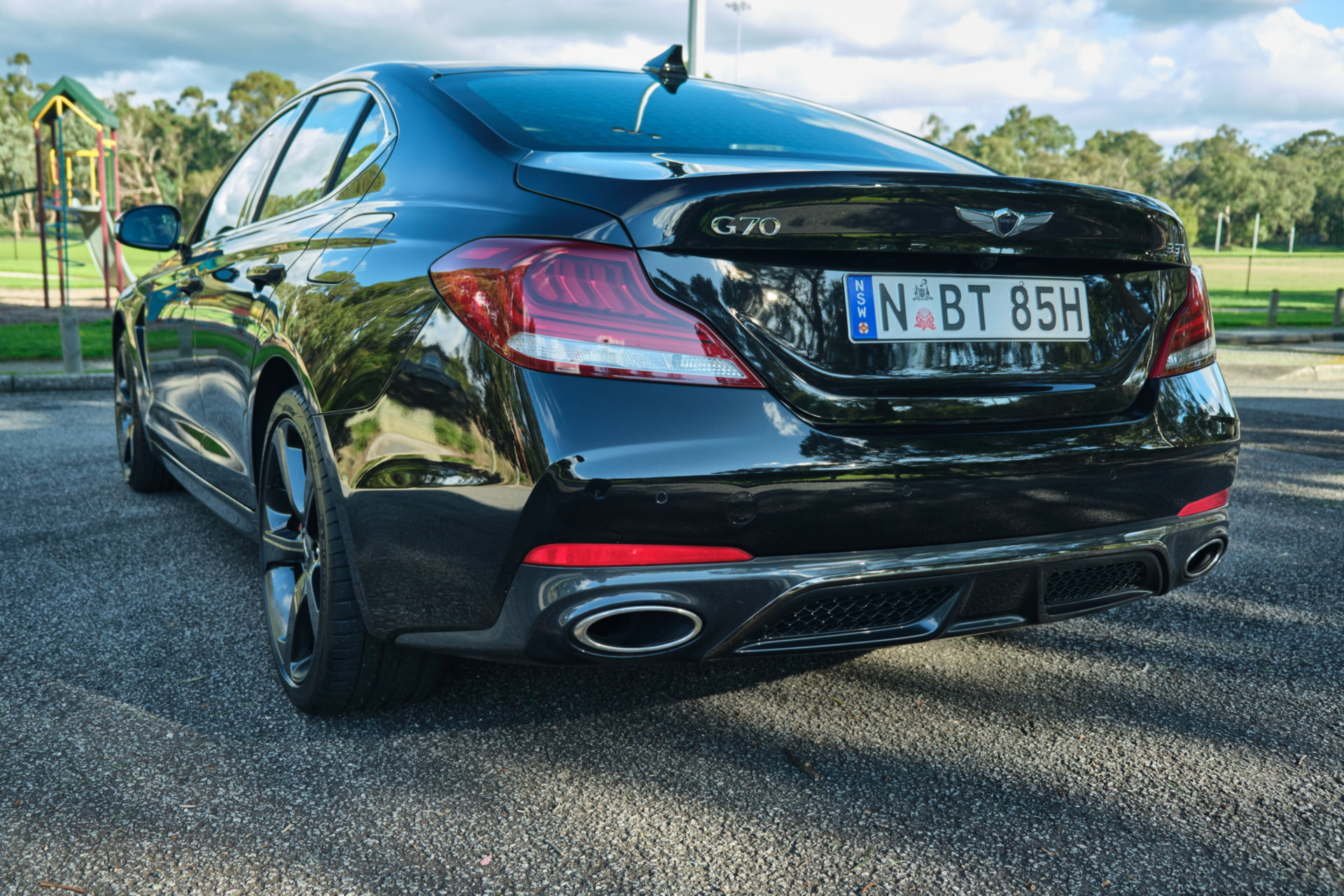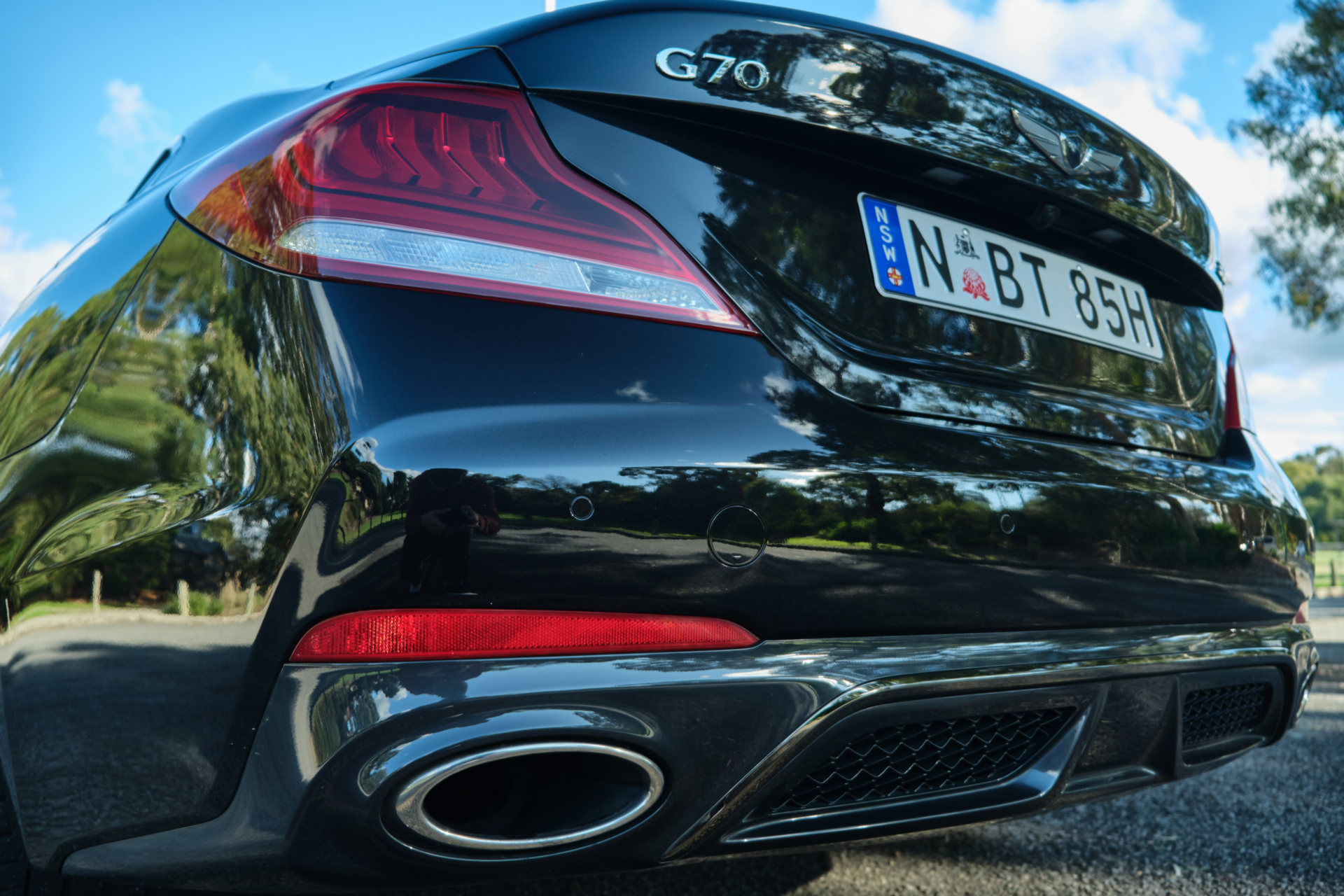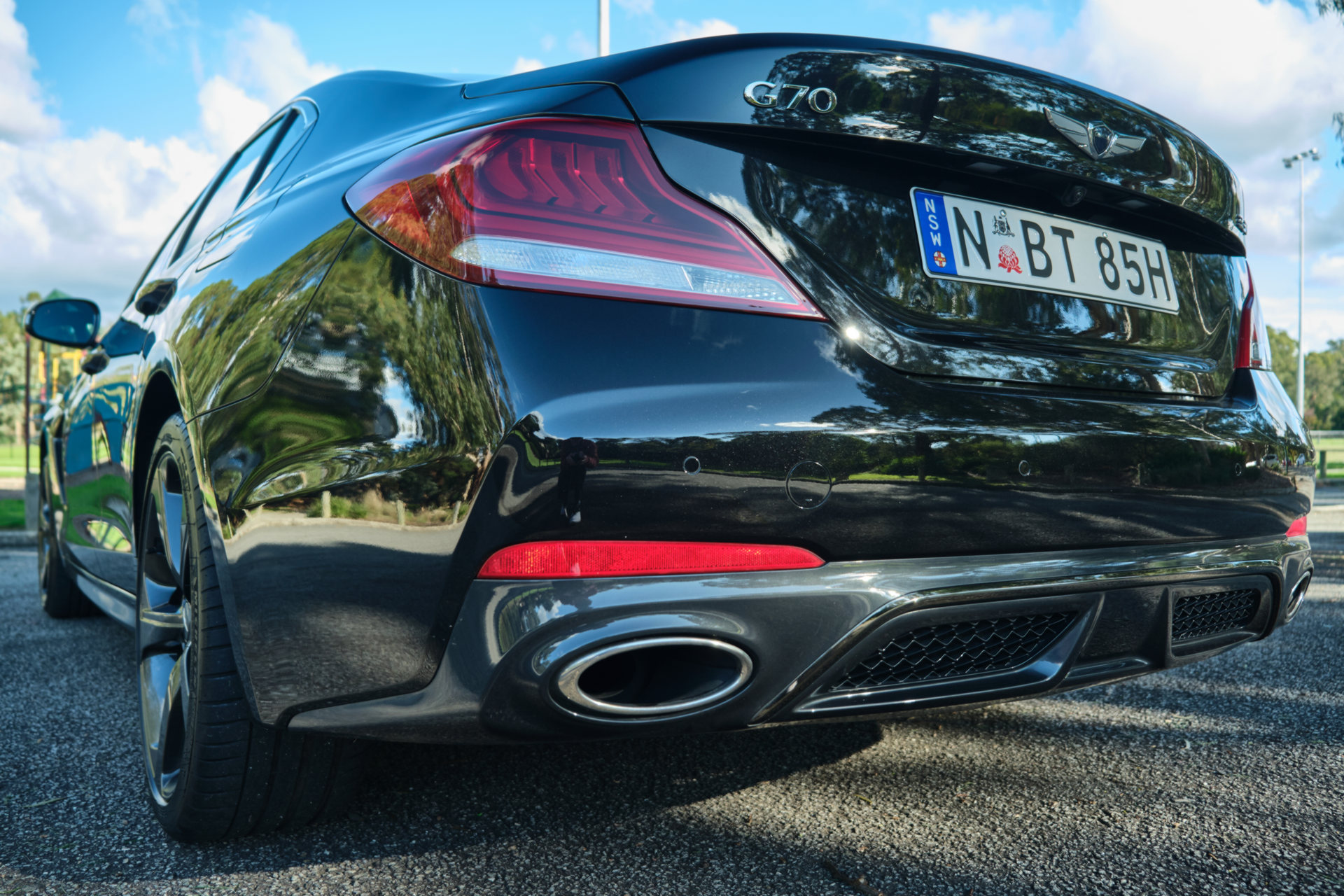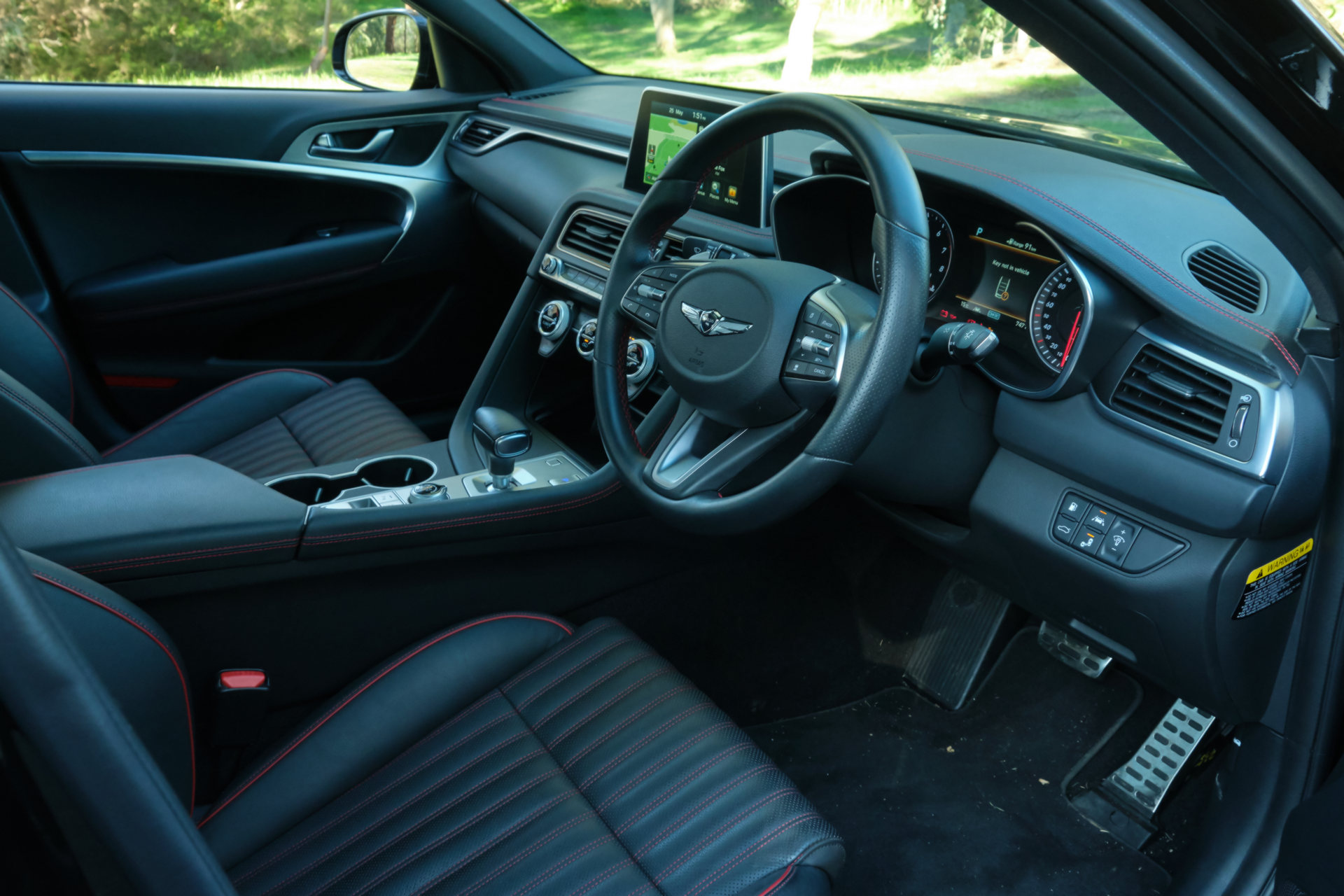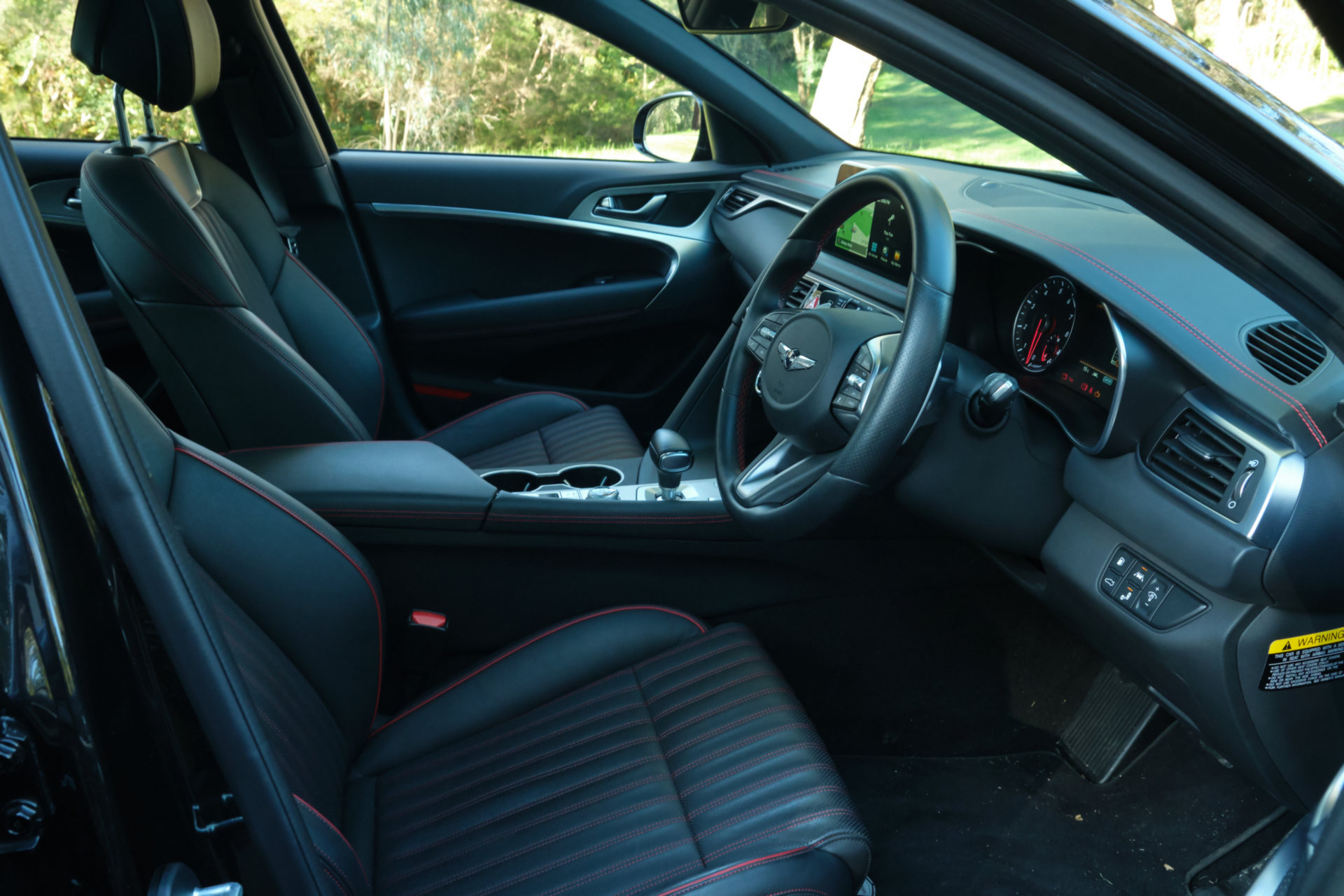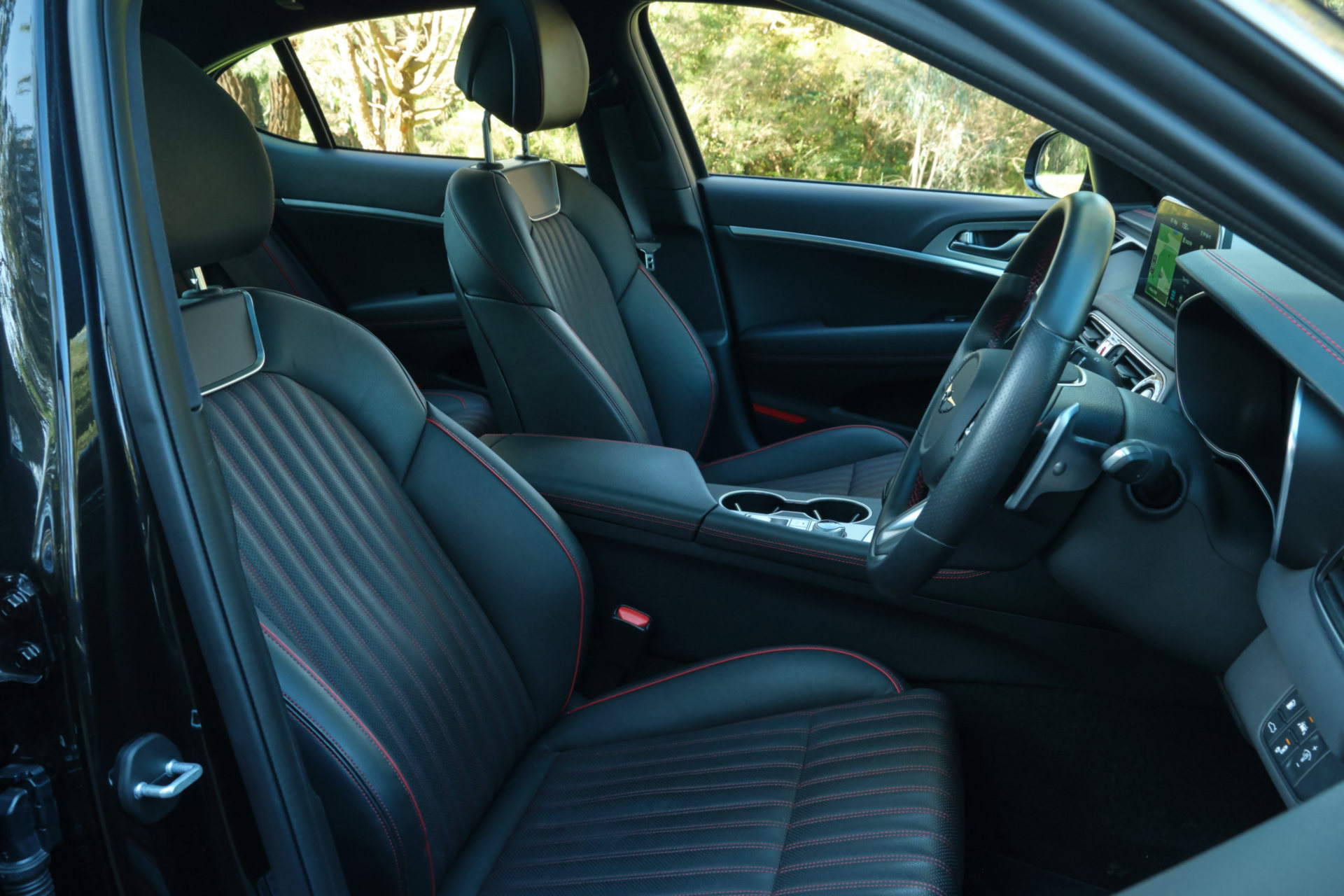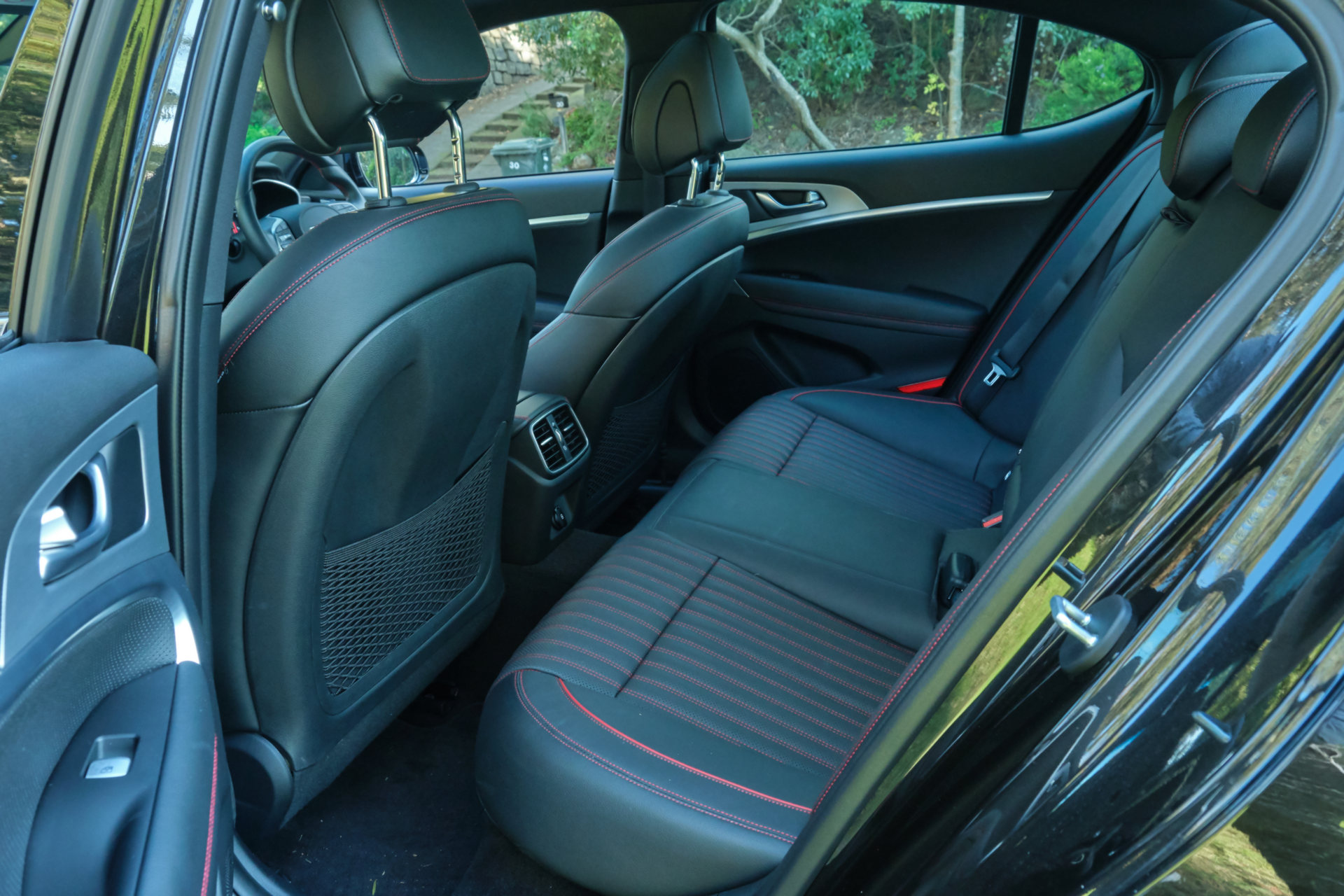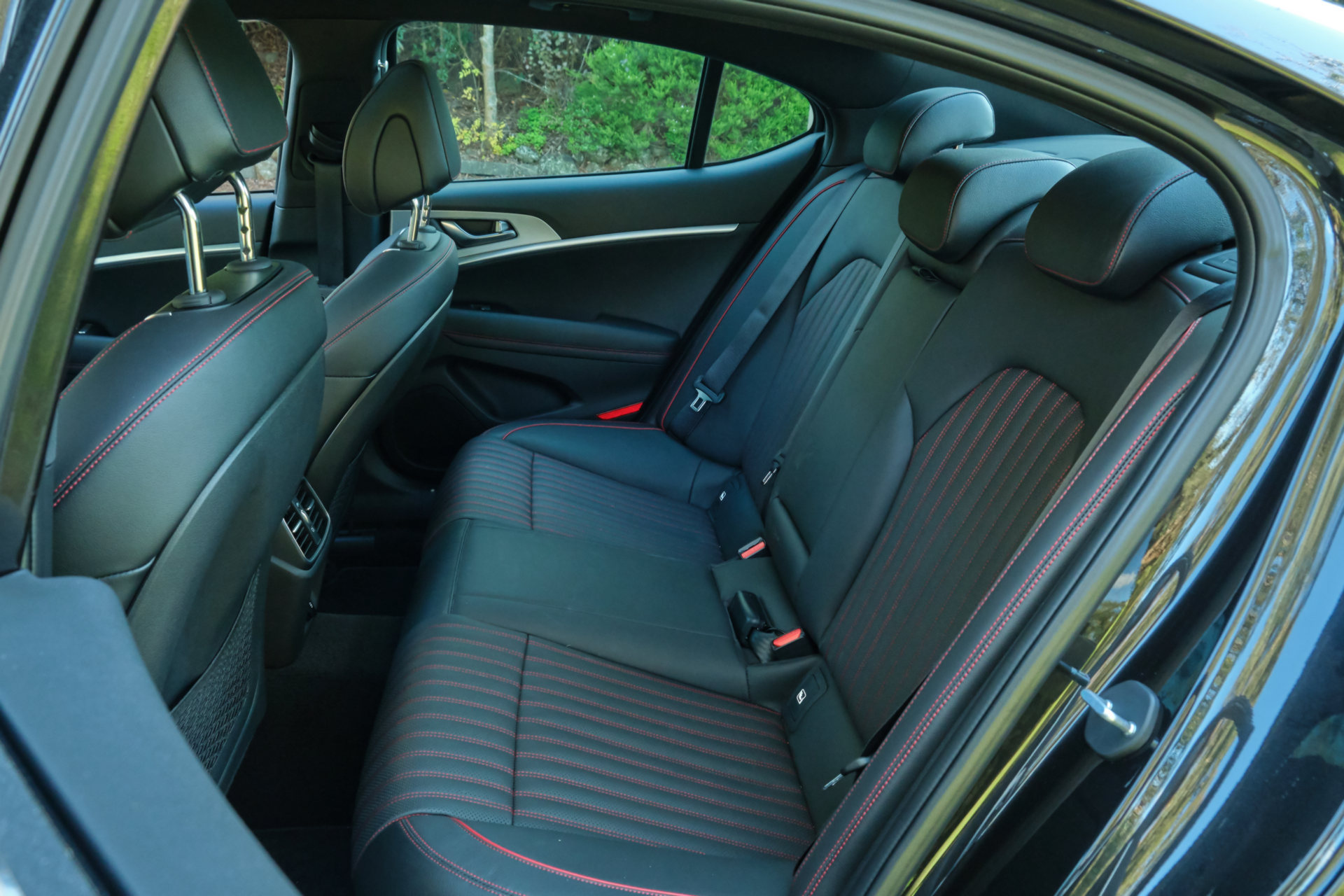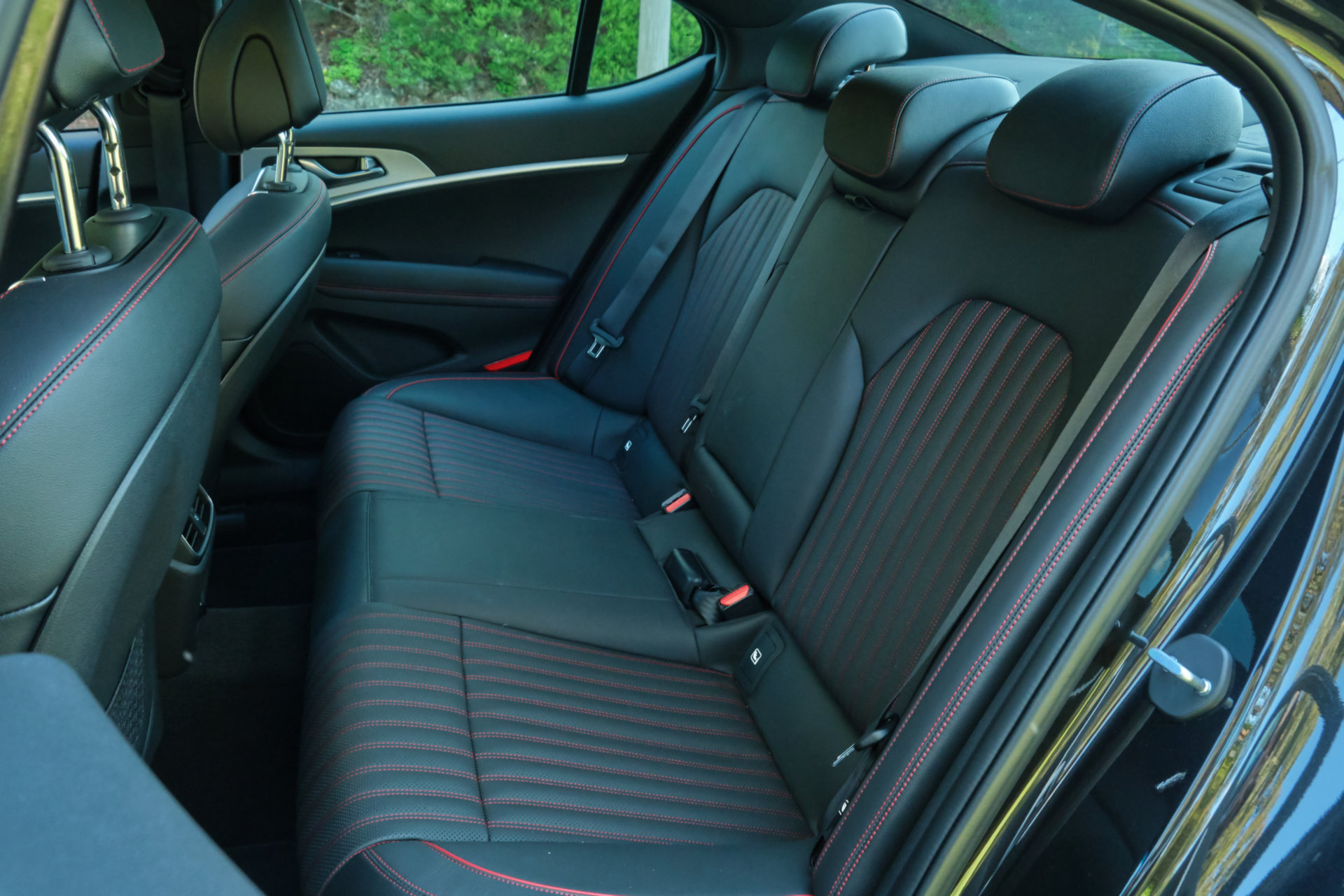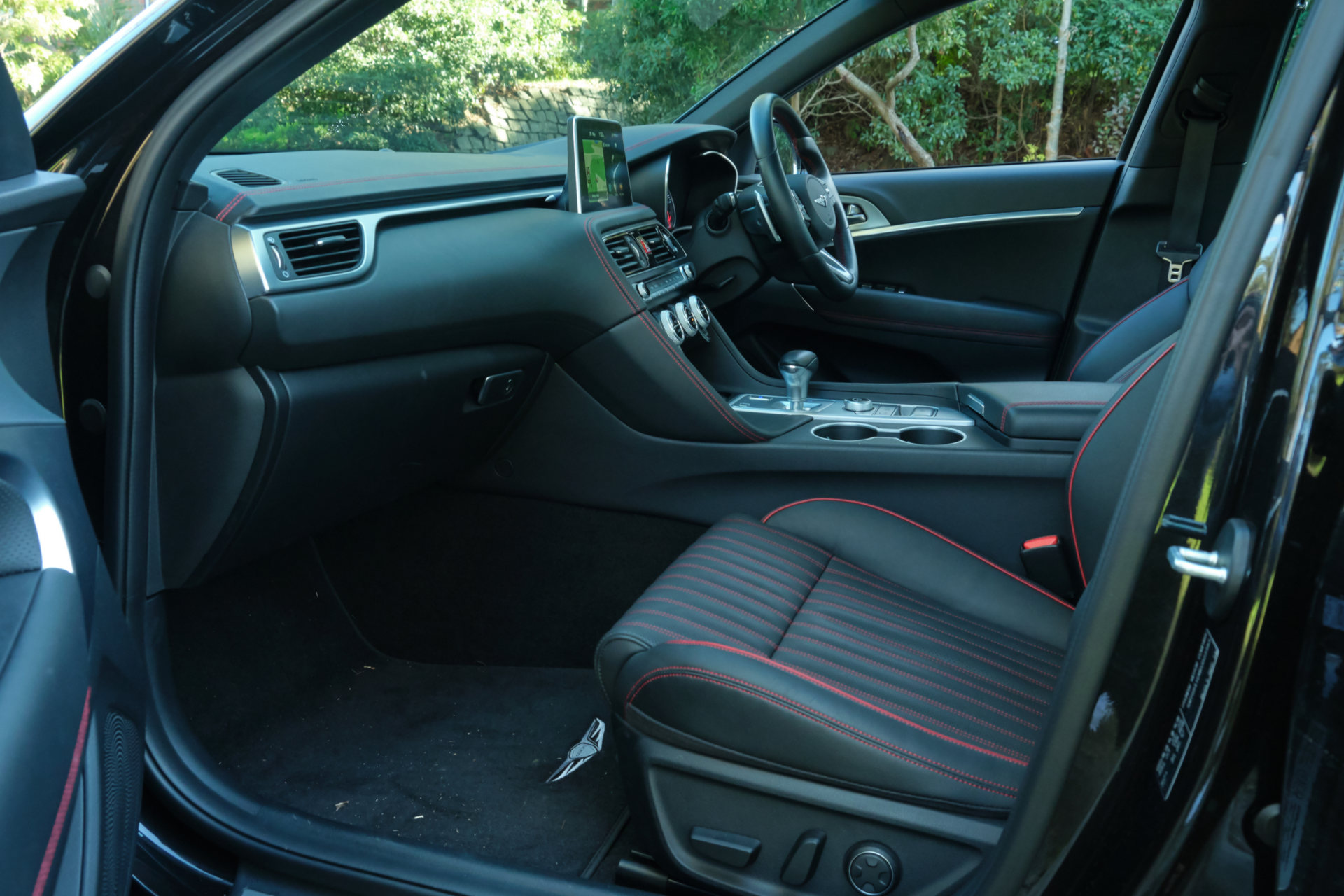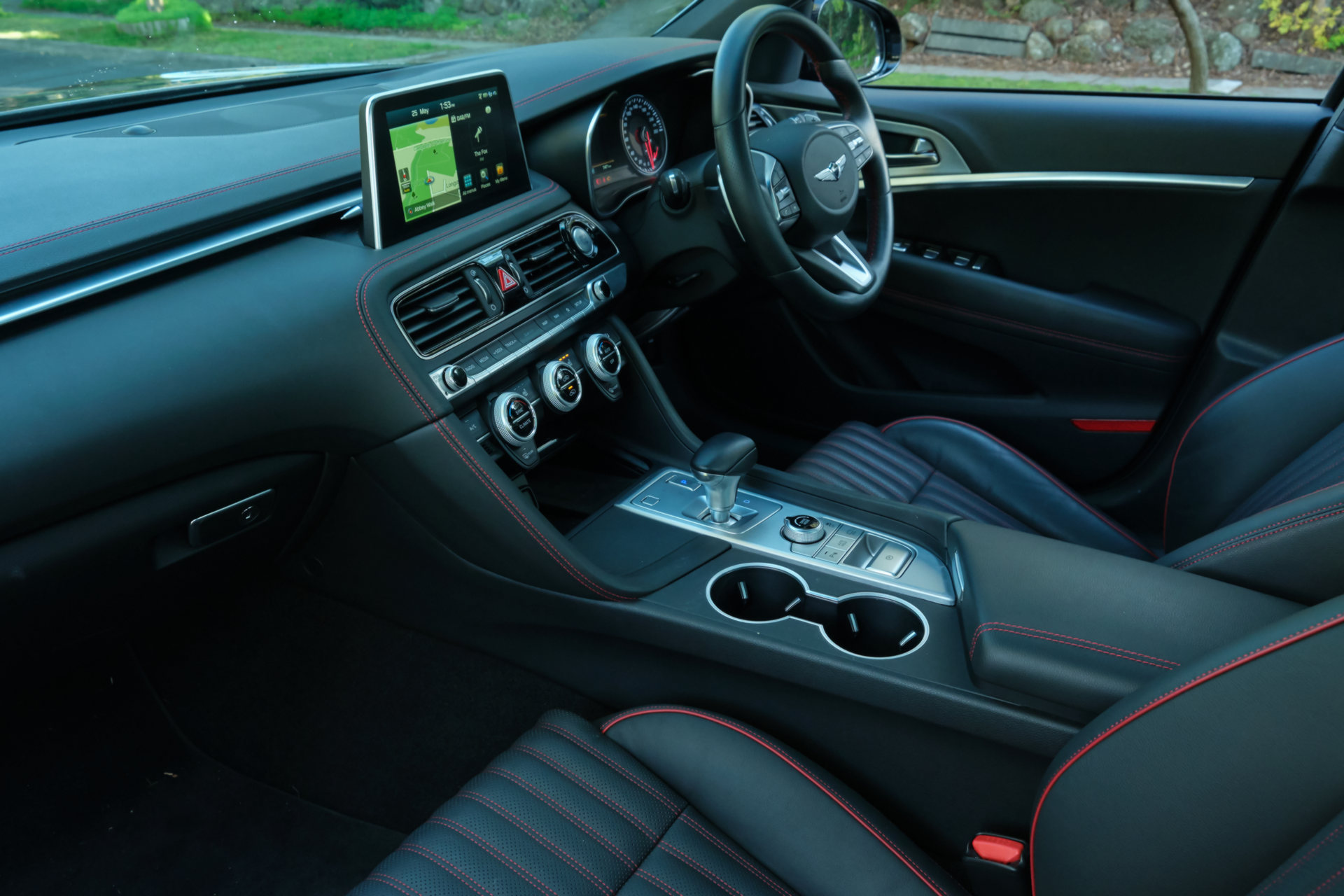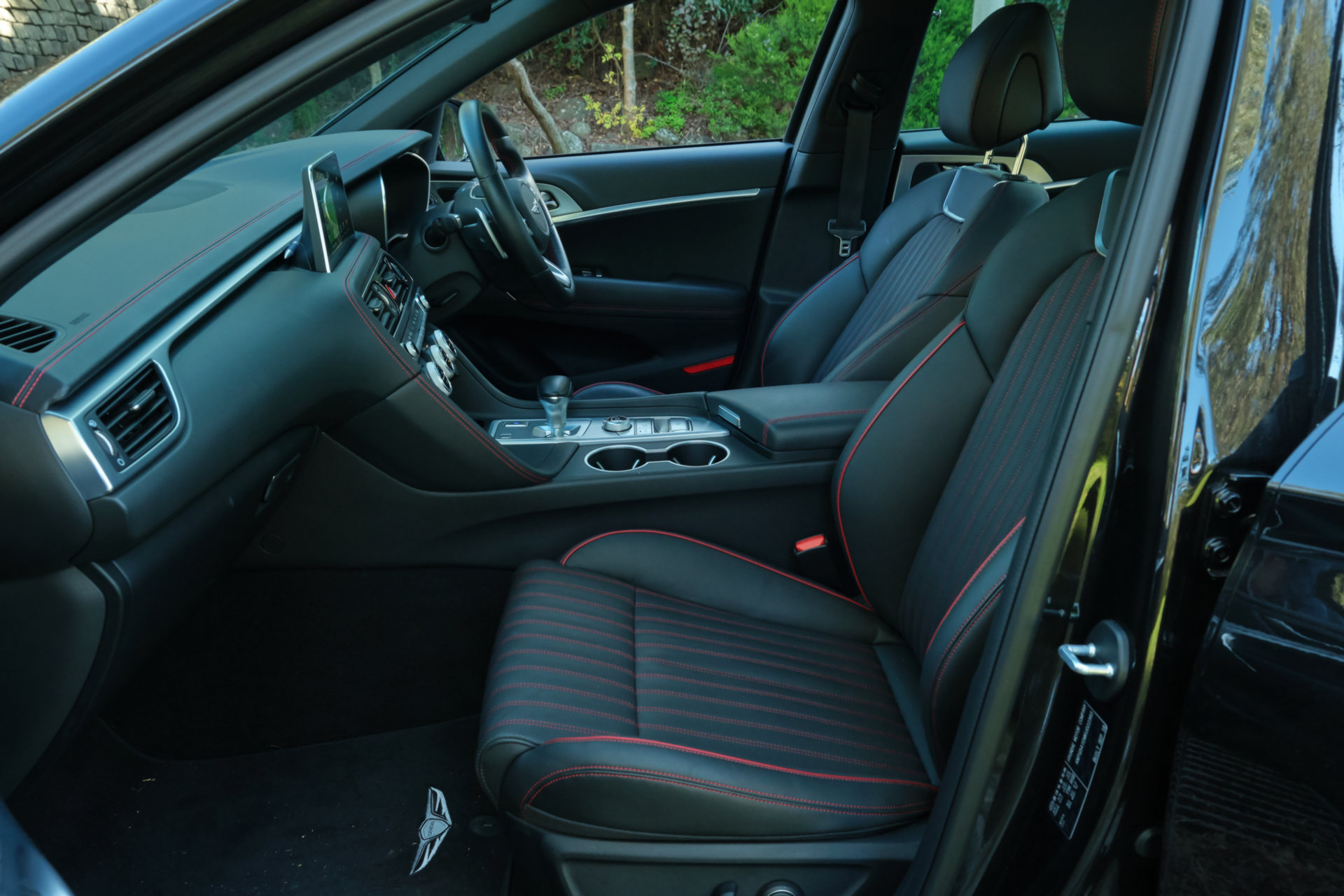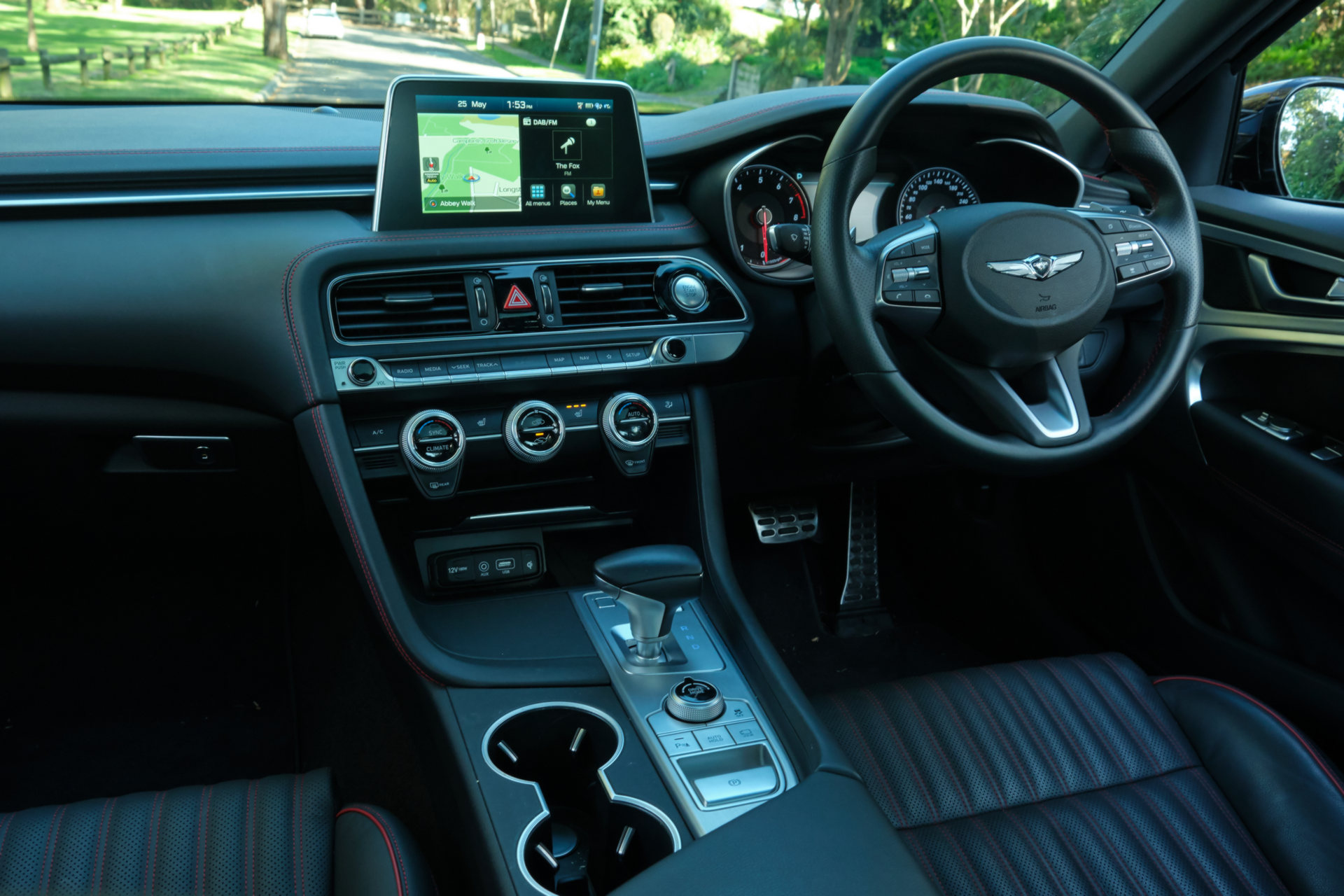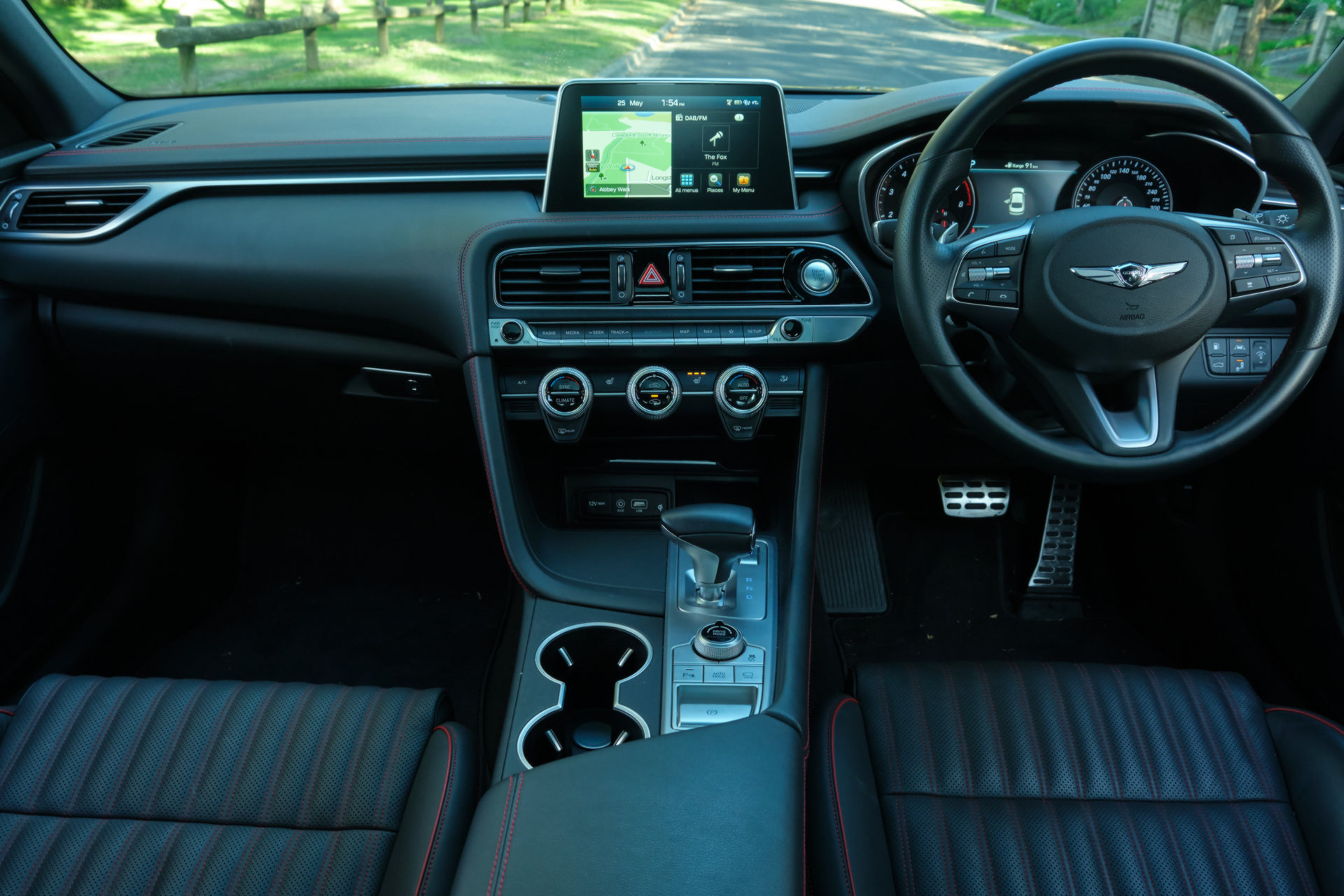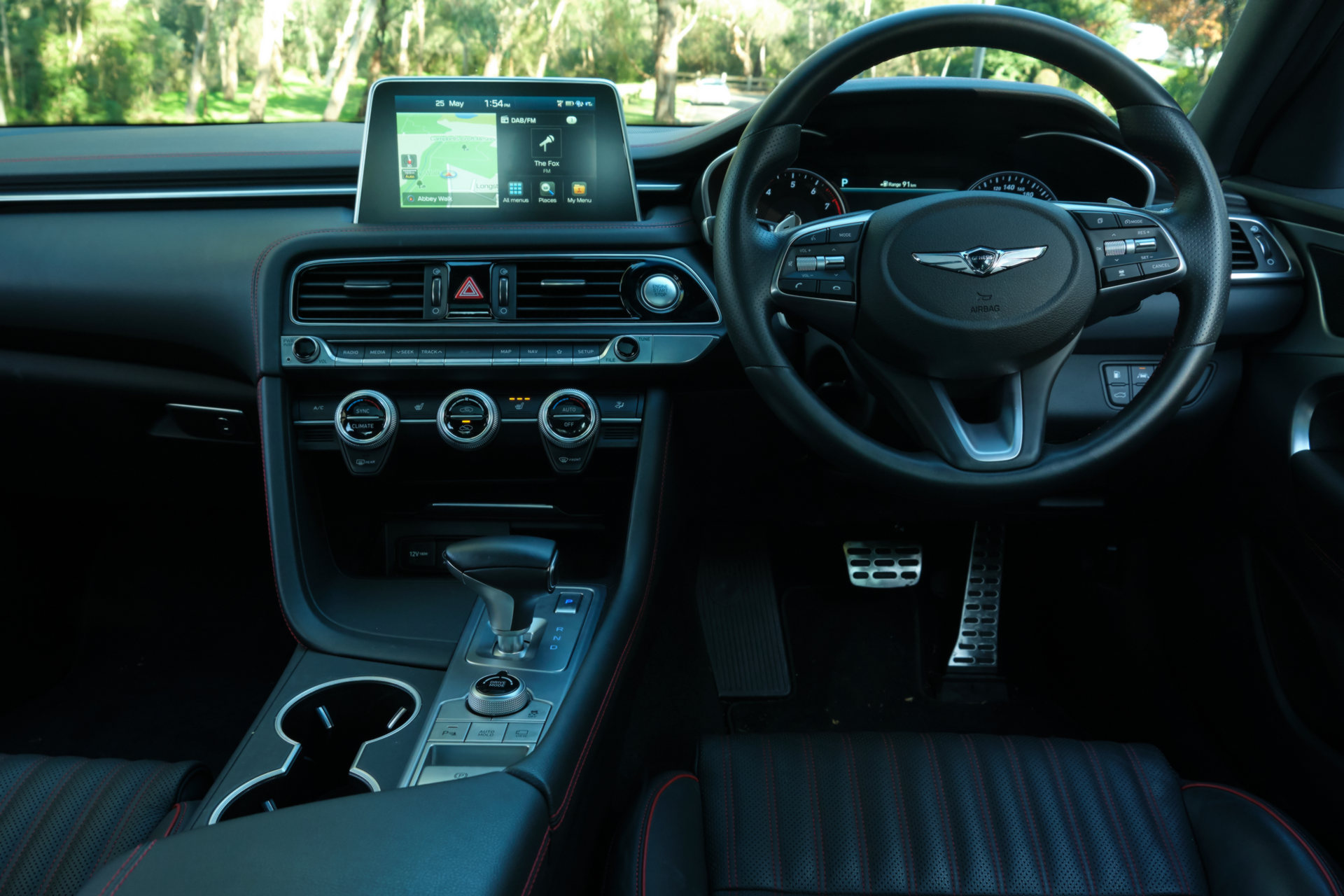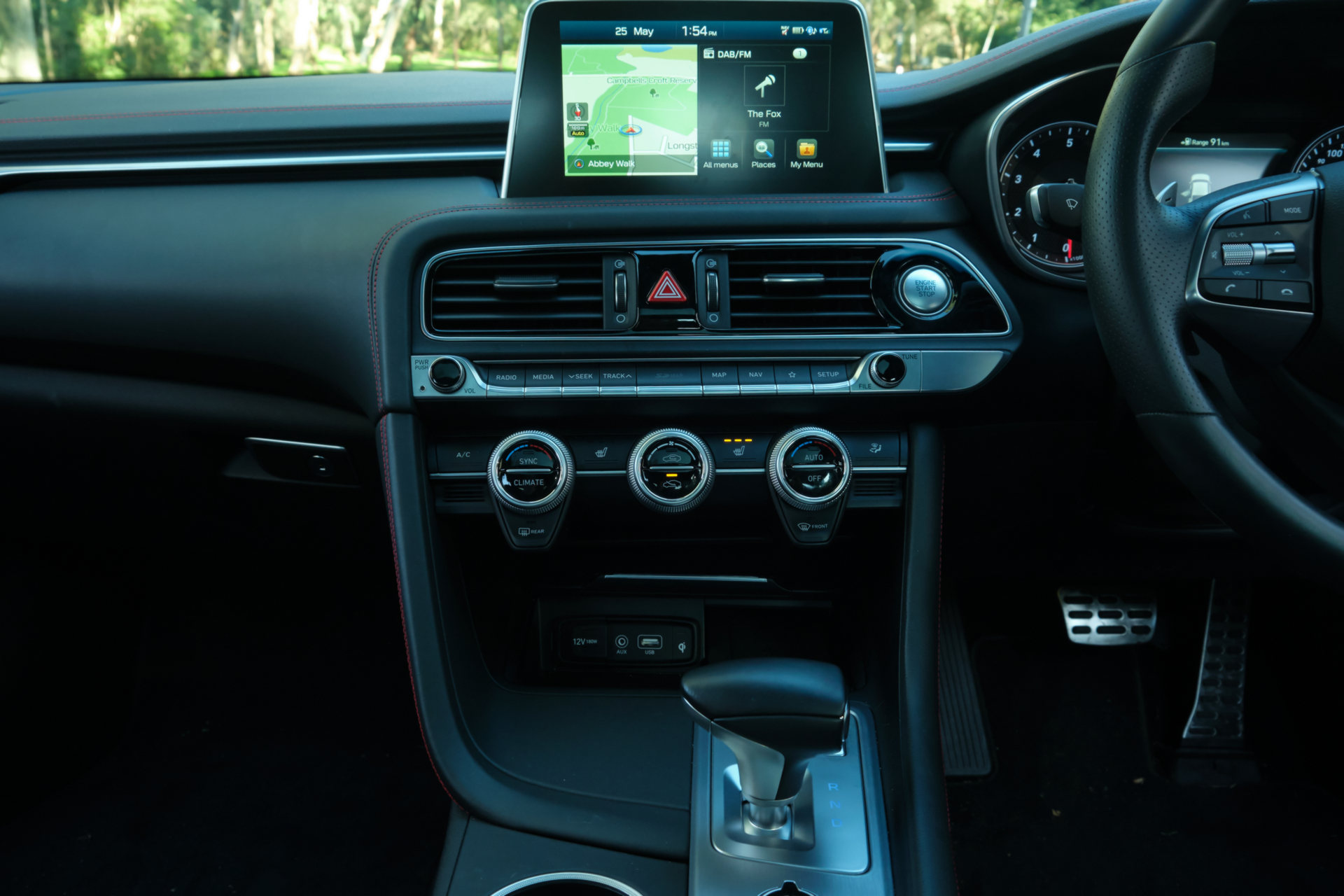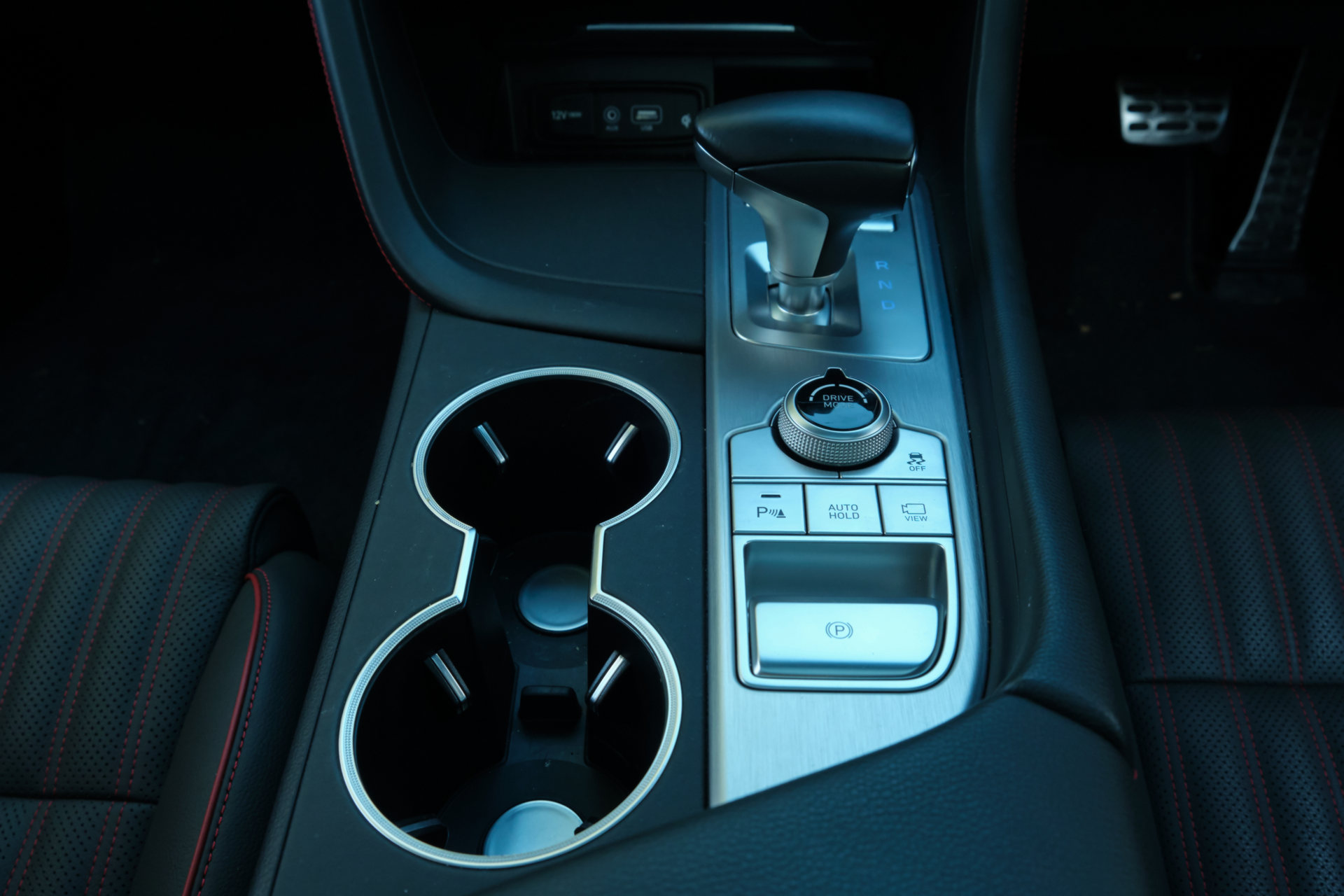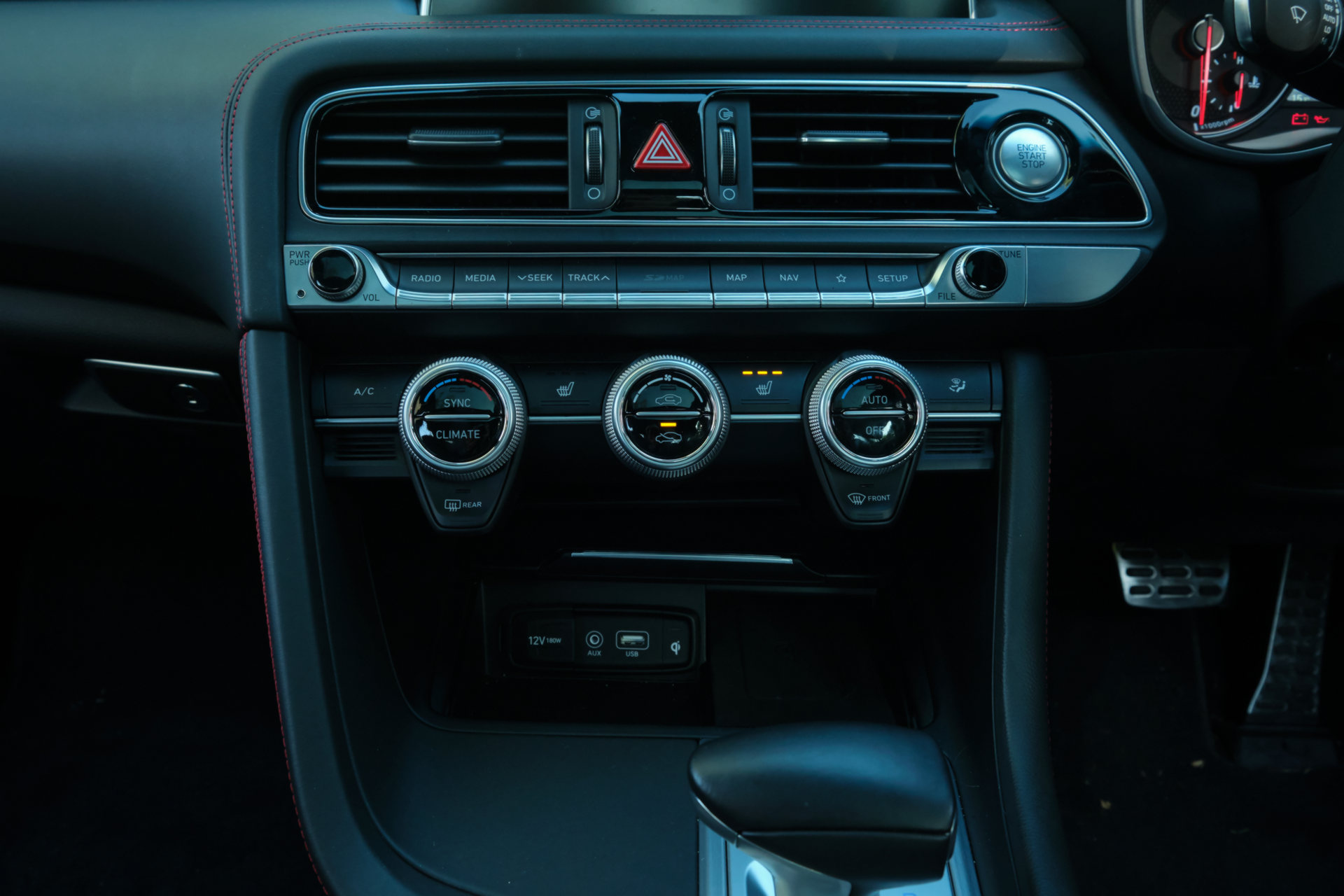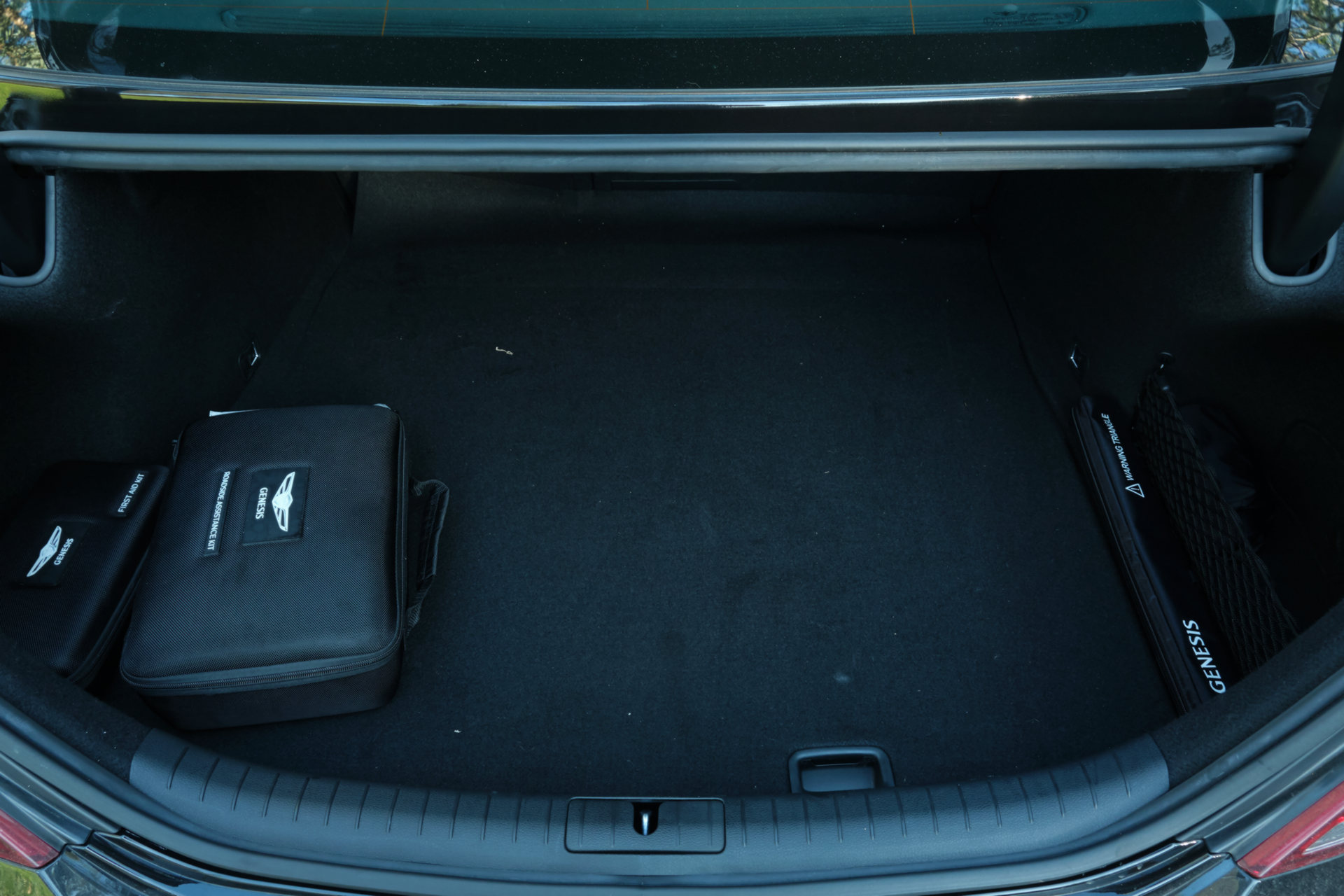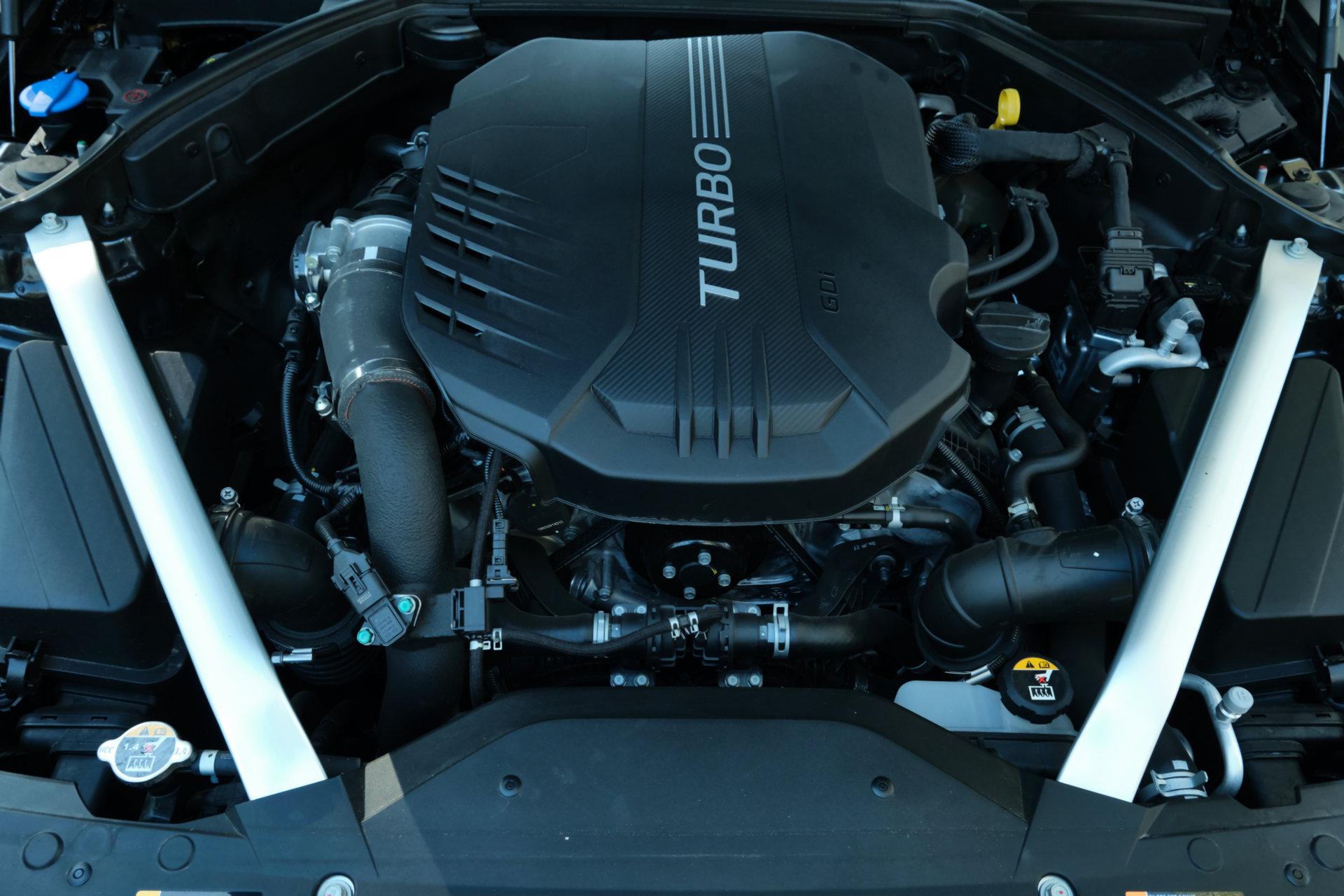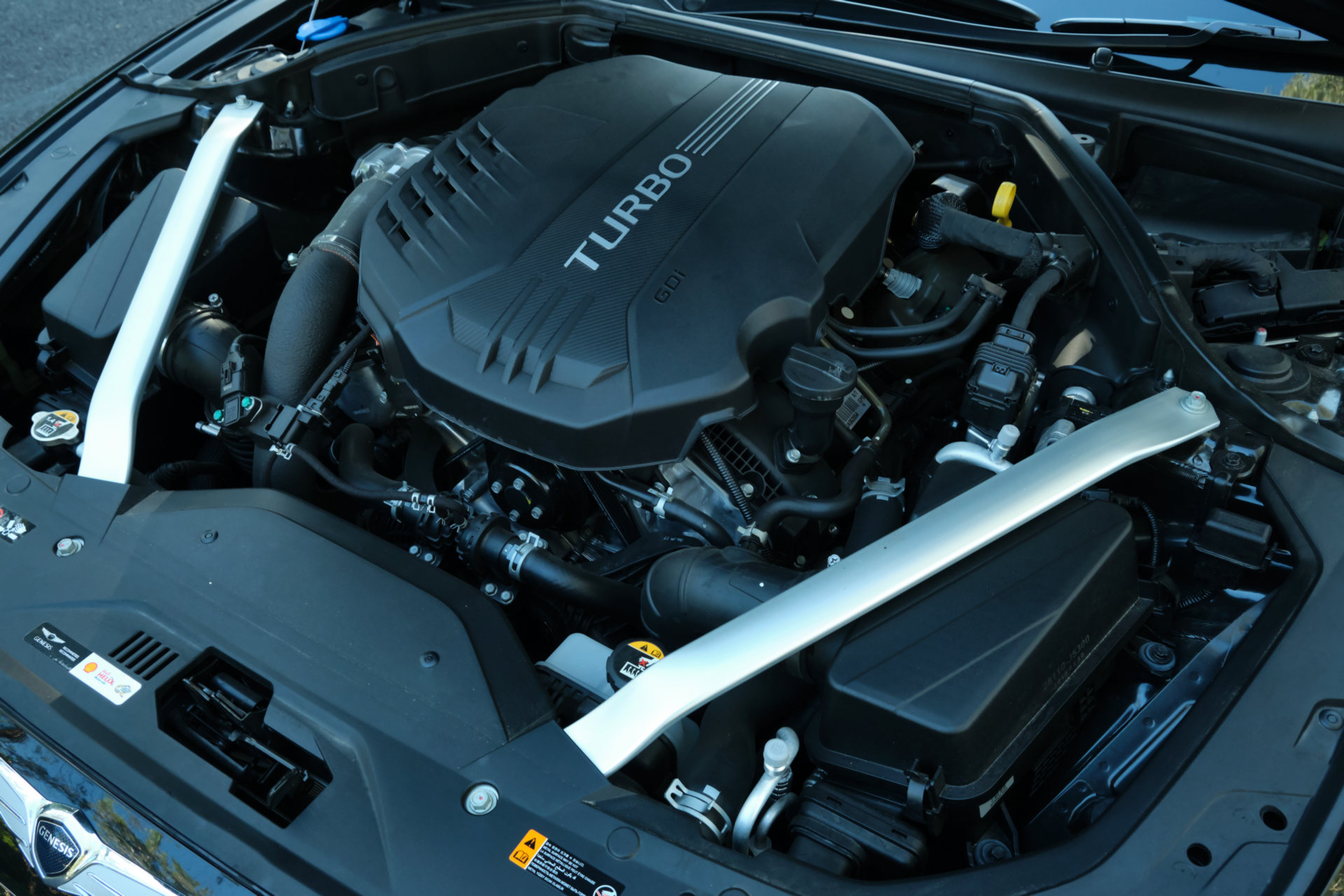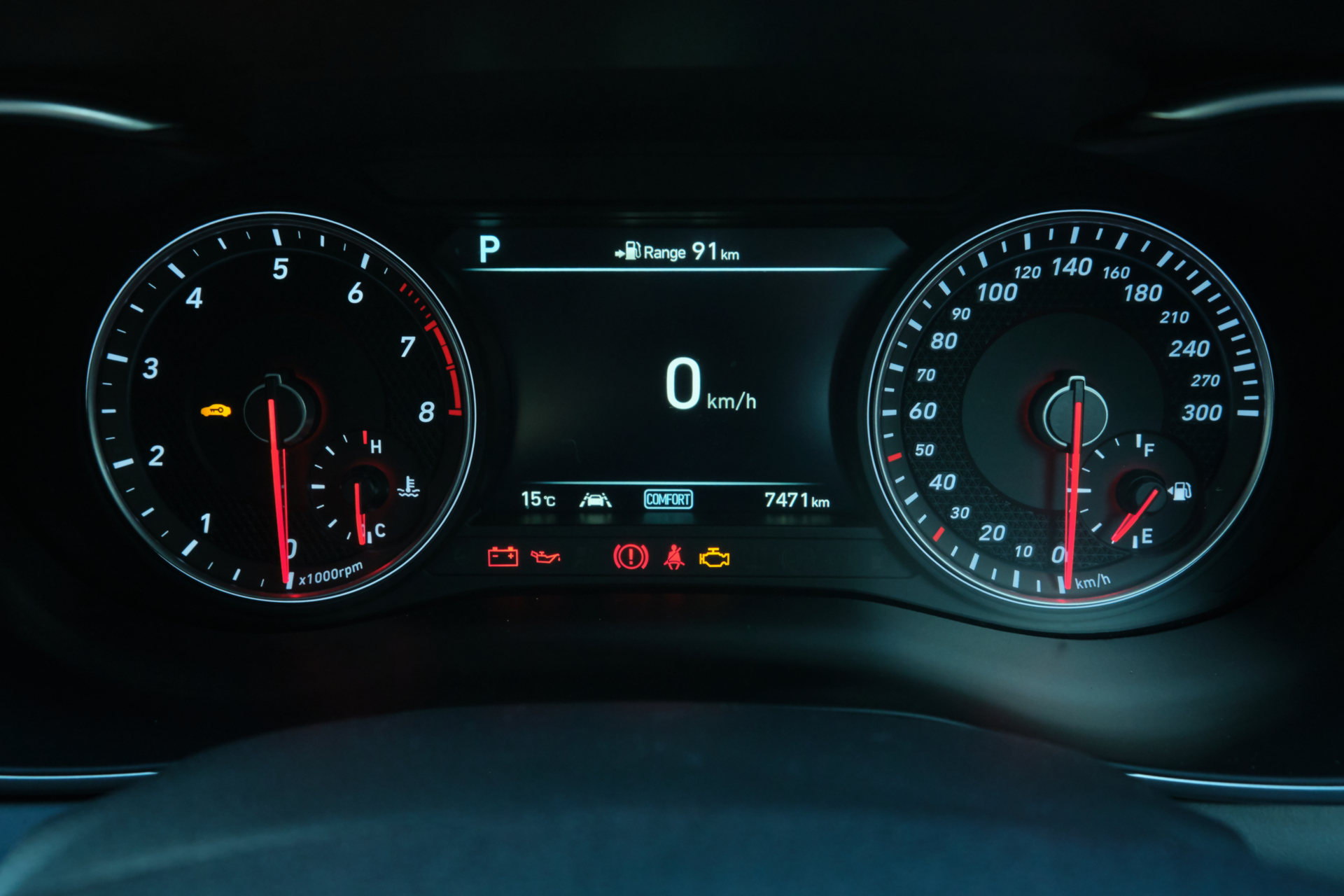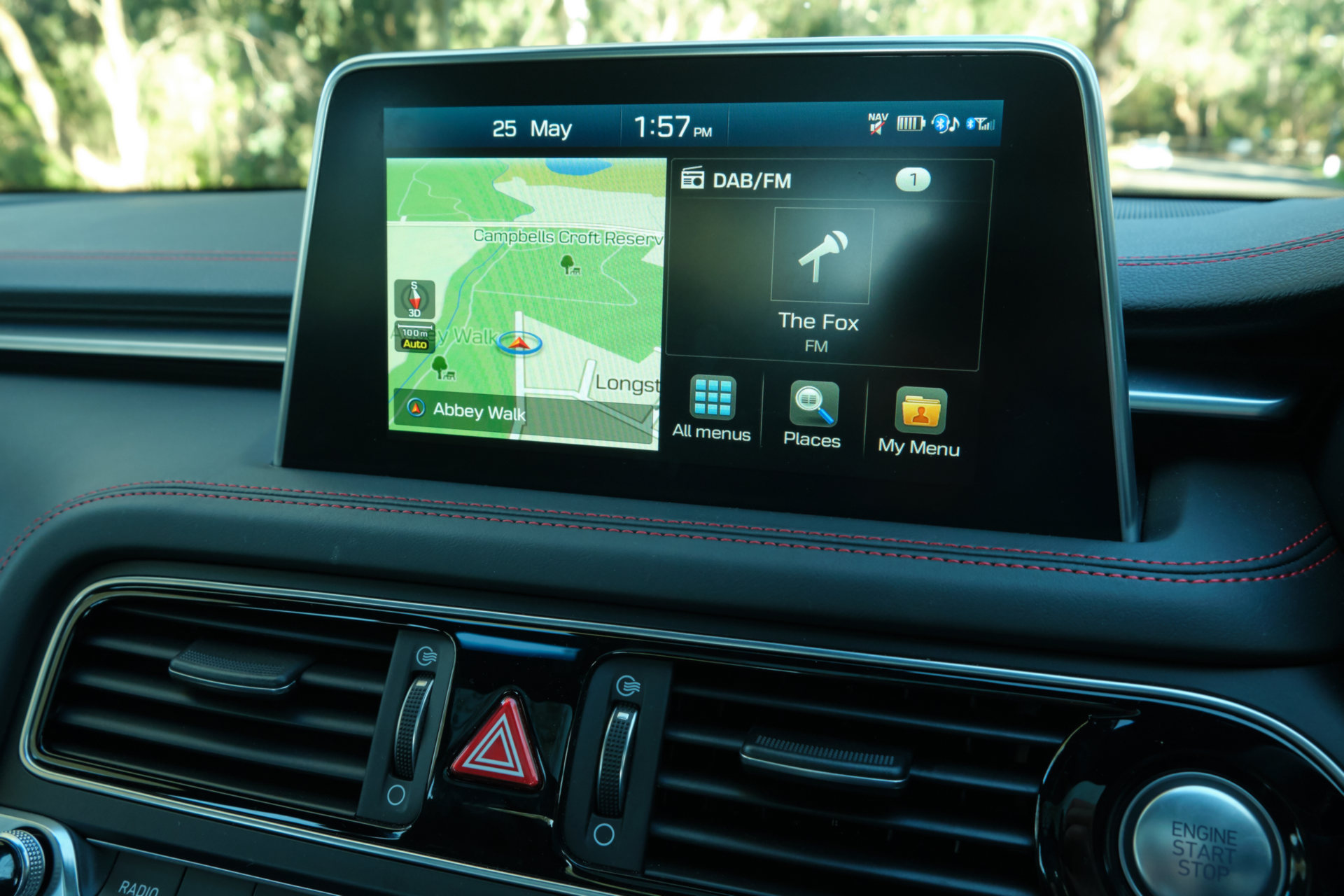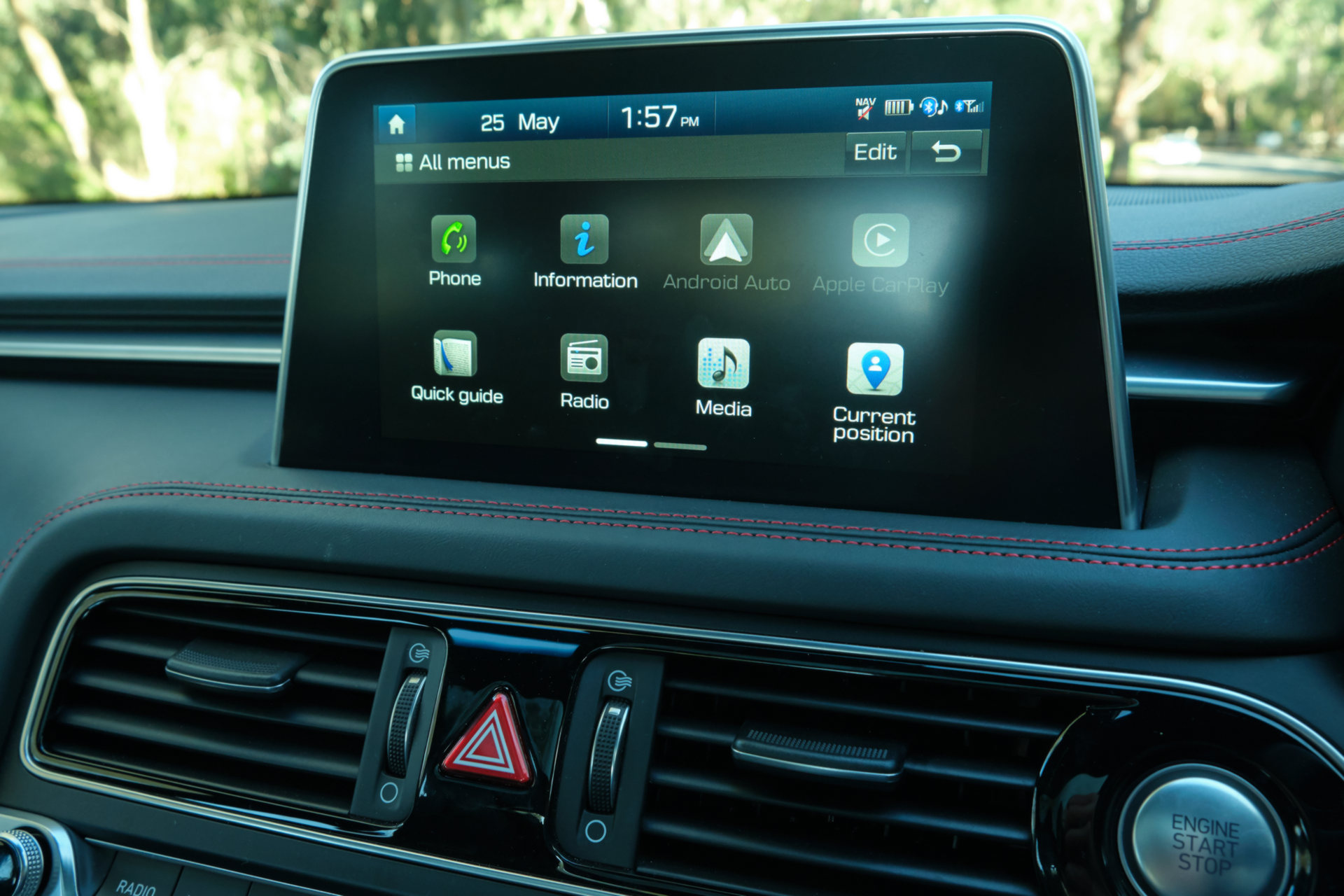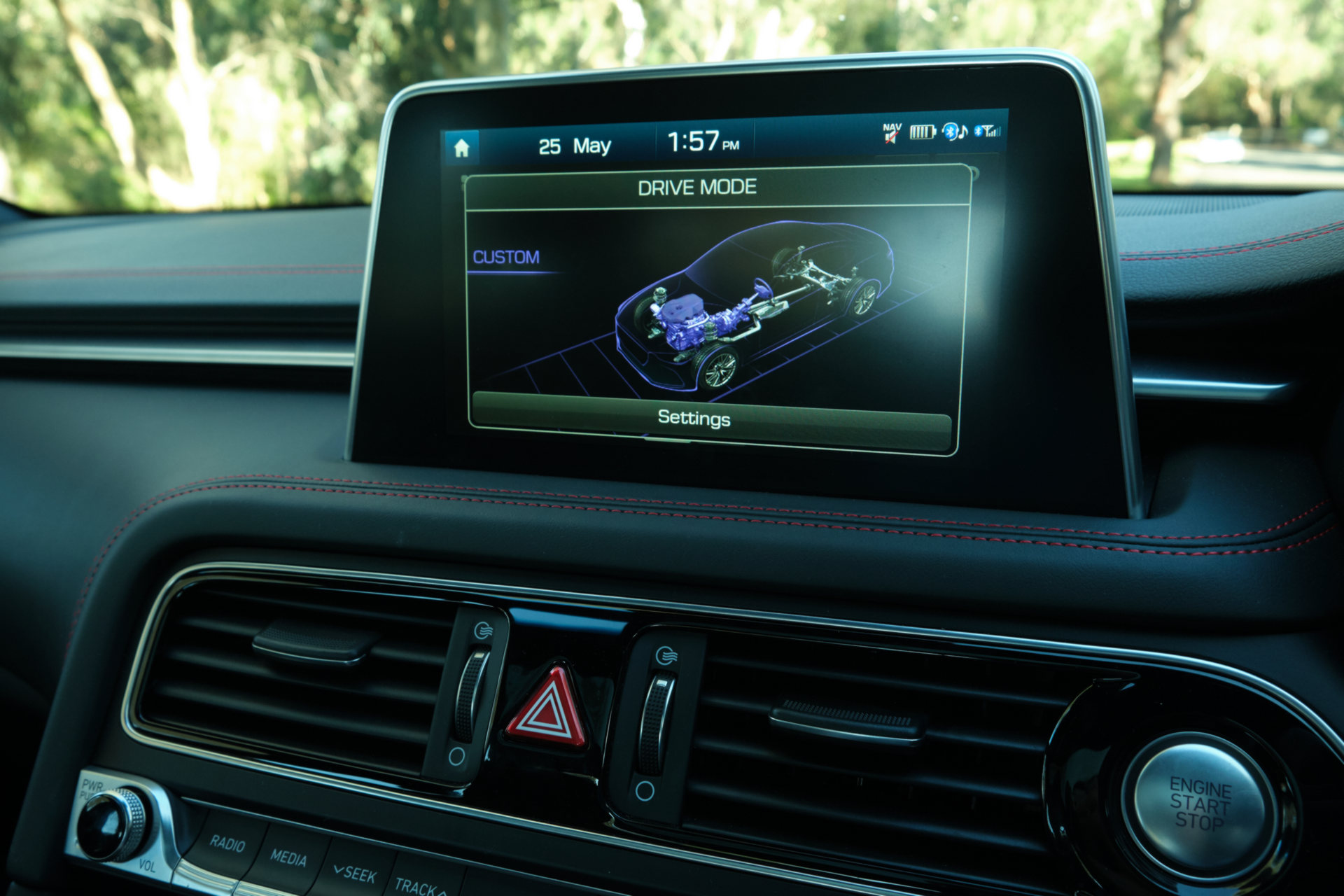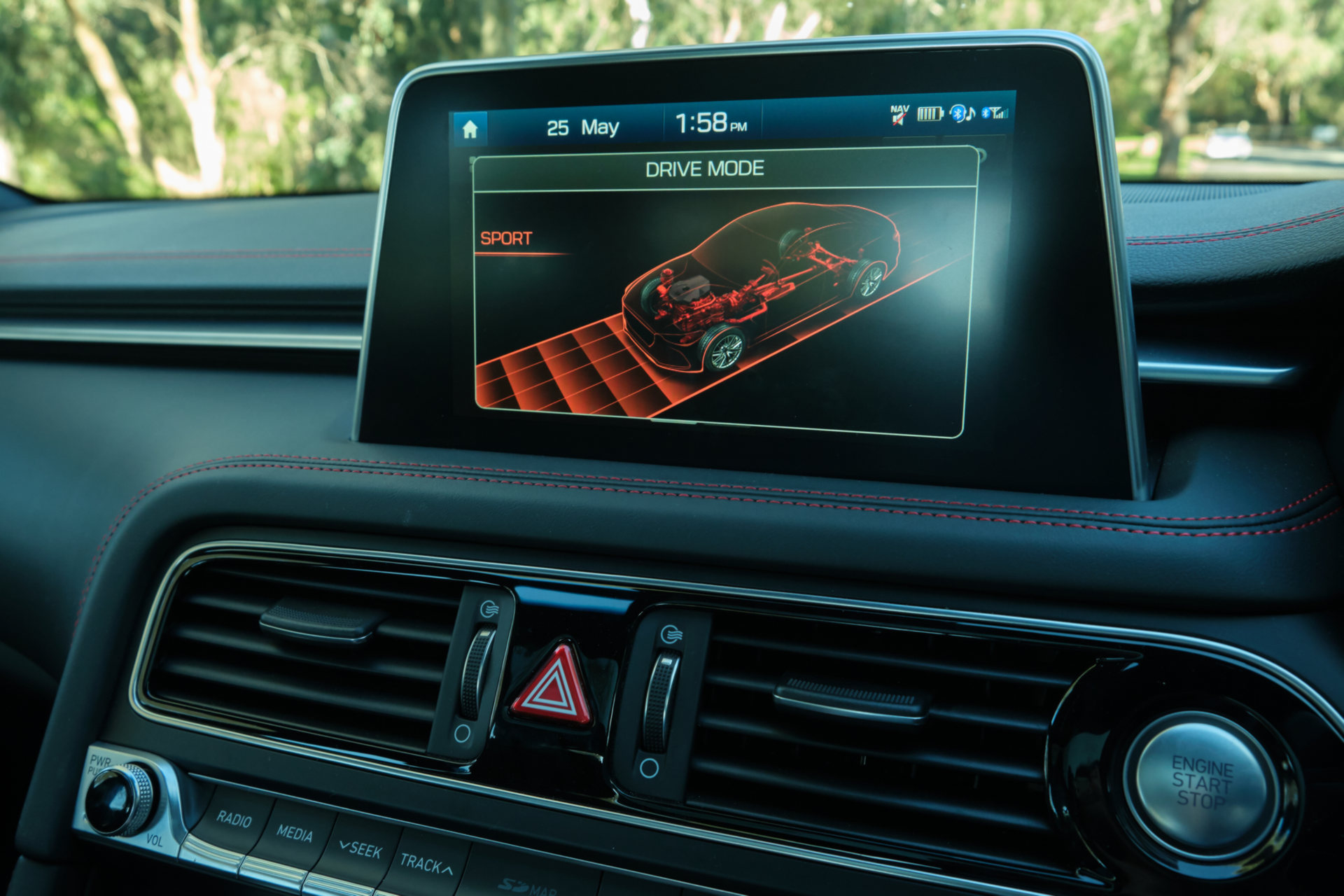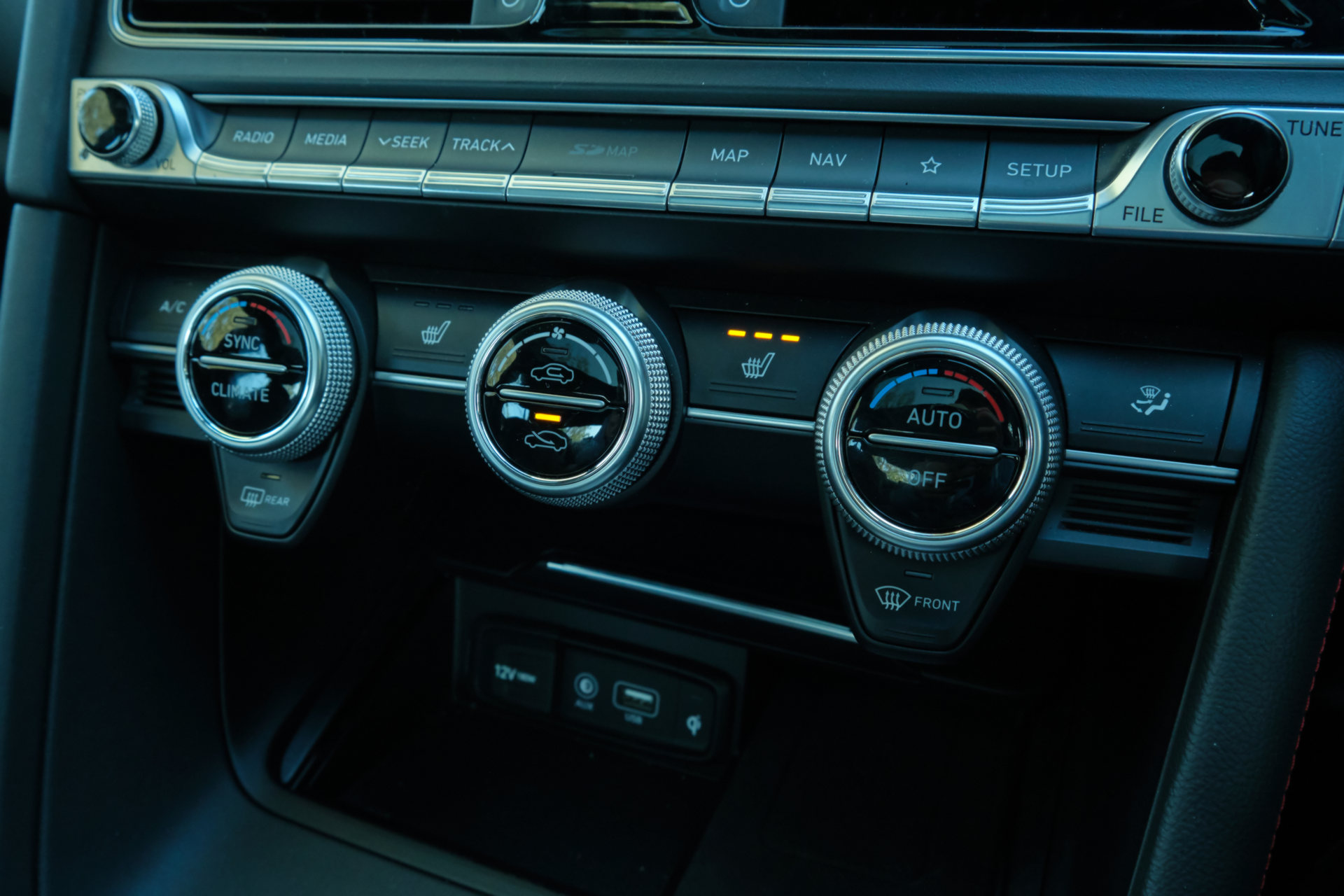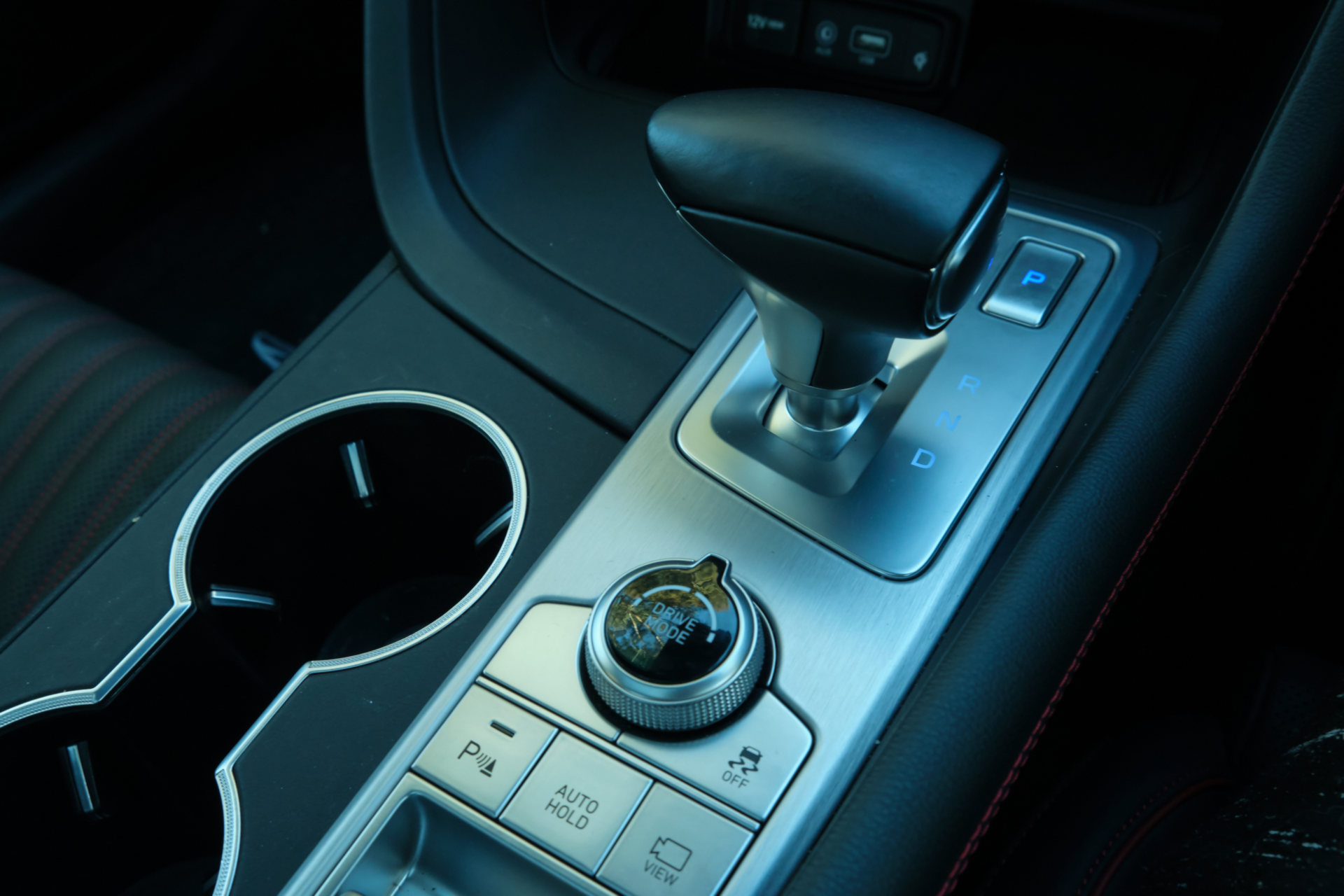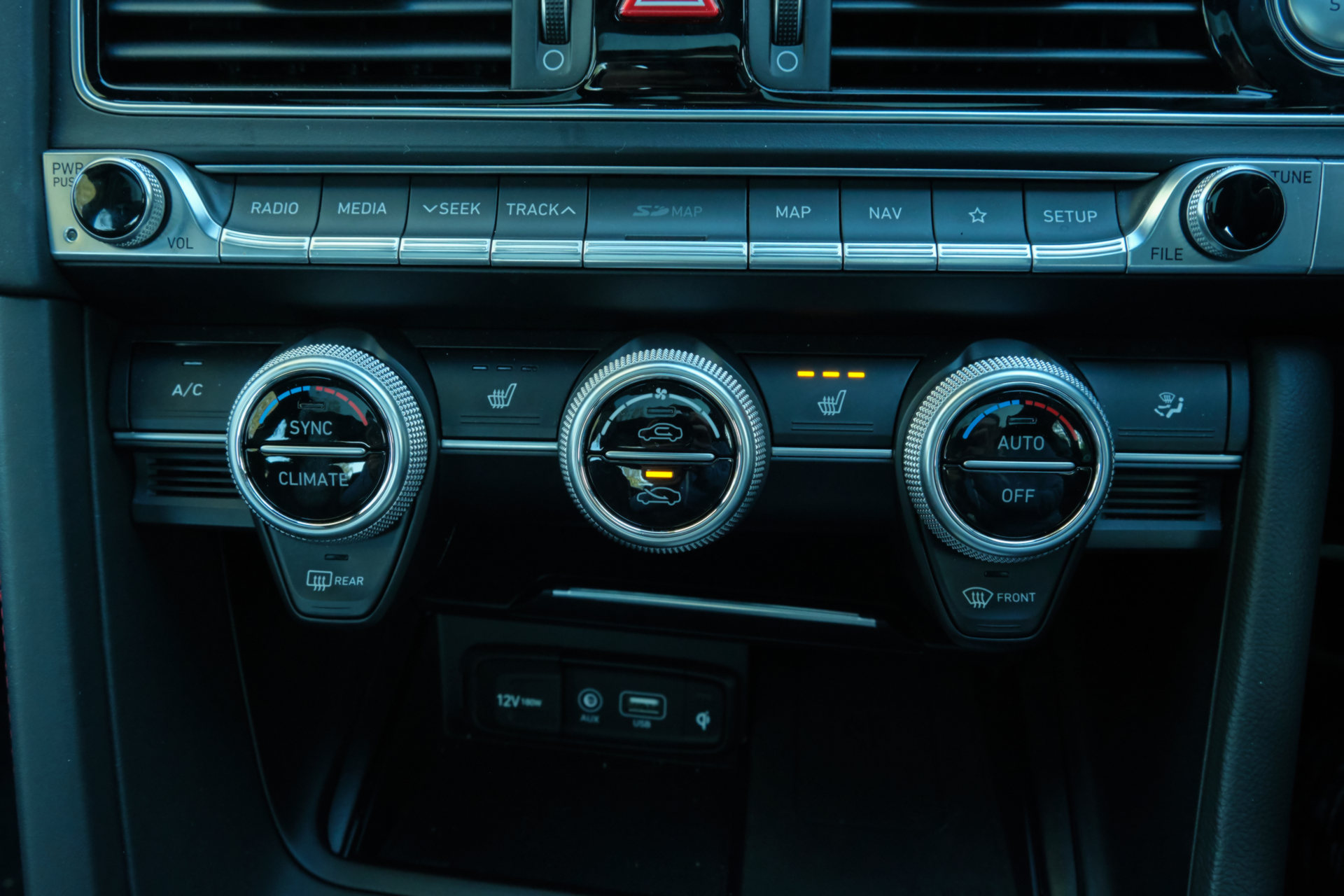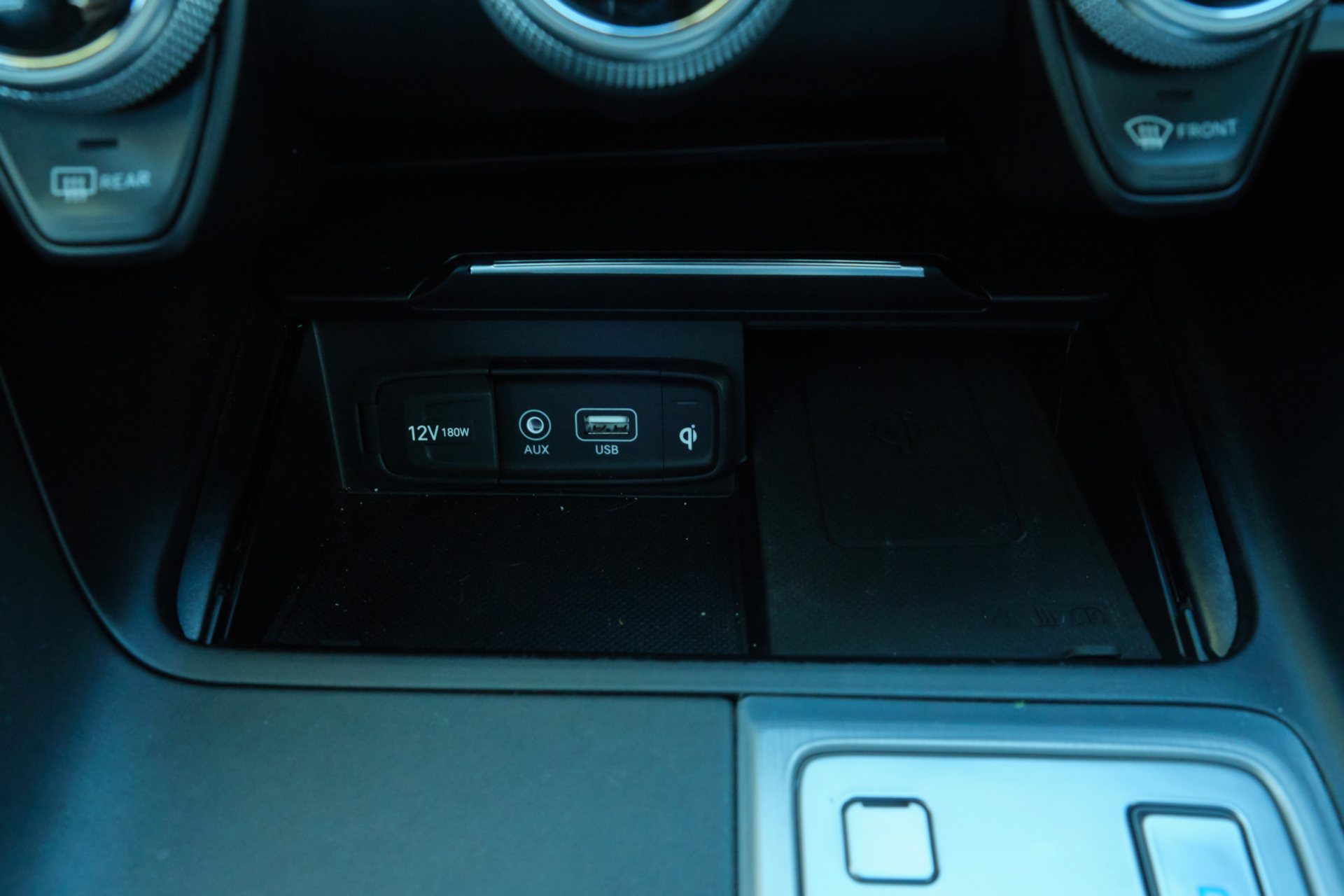In the not too distant future, the Genesis G70 will be updated with tweaked looks and, in all likelihood, some hardware modifications. For whatever reason, we’ve never had much time behind the wheel of the outgoing 2020 G70, but last month, did have the pleasure of driving one for a week, just long enough to find out for ourselves what all the hype has been about.
The Genesis G70 has been on sale in the United States since early 2018, but only landed on Australian shores in mid-2019, meaning local buyers will likely have to wait at least another 12 months before the facelifted variant hits showroom floors.
The basics
The example we tested was the G70 3.3T Sport. As the name implies, it is powered by the flagship 3.3-liter twin-turbocharged V6 that produces 365 HP (272 kW) and 376 lb-ft (510 Nm) of torque and is mated to an eight-speed automatic transmission driving the rear wheels. This is the same powertrain as the Kia Stinger GT we sampled just a few months ago.
Sitting above the 3.3T Sport in the Aussie family is the 3.3T Ultimate and 3.3T Ultimate Sport. There are no mechanical differences between the three, with the changes limited to subtle styling tweaks and features. The Ultimate Sport, for example, receives a 15-speaker Lexicon audio system and Head-Up display which the lesser versions don’t have.
Local prices for the 2020 G70 3.3T Sport start at AU$81,202 (US$55,152) drive away while the 3.3T Ultimate and 3.3T Ultimate Sport were both priced at AU$89,097 (US$60,514) drive away at the time of writing.
Buyers who want to save some money and don’t need the power offered up by the 3.3-liter V6 can opt for the G70 2.0T, G70 2.0T Sport, and G70 2.0T Ultimate variants, all with a 2.0-liter turbo-four offering up 240 HP (179 kW) and 353 Nm (260 lb-ft). These models are priced at AU$65,800 (US$44,691), AU$69,968 (US$47,521), and AU$77,886 (US$52,899) respectively.
The drive
Having sampled the Kia Stinger GT, the G70’s brother-from-another-mother, just a few months ago, I went into my week with the Genesis thinking it would feel largely the same, only a little sportier and more dynamic. However, it did not feel just a ‘little’ bit different and instead felt like an entirely different car.
As you would imagine, the G70 3.3T pulls just as well as the Stinger GT. The car manufacturer’s 3.3-liter twin-turbo V6 provides excellent power and torque throughout the rev-range. Genesis quotes a 0-100 km/h (62 mph) time of 4.7 seconds and that seems just about right.
Read Also: Driven – Is The 2020 Kia Stinger GT With The Twin-Turbo V6 The Sports Sedan Of The Moment?
As for the eight-speed automatic transmission, it does a fine job and shifts up and down the gears with very little fuss and great speed. It is not as good as some of the dual-clutch transmissions on the market and also has no dedicated manual mode and will shift up for you on occasion even if you start using the paddle shifters. The only way around this we found was to switch off the traction and stability control systems.
While in-gear shove feels just as impressive as the Stinger, that’s where the driving similarities between the two stop. With launch control enabled, the G70 is much more prone to spinning up its rear wheels than the Stinger GT, not that that is a bad thing. It simply adds to the fun.
Fun and engaging handling
The differences become particularly apparent in the corners, a place where the G70 shines. Although it shares its engine and transmission with the Stinger, the wheelbase of the Genesis is 7.5 cm (~3.0-inches) shorter and this, alongside the car’s bespoke suspension and chassis tuning, makes it feel like a different handling proposition entirely.
Thanks to the superb Michelin Pilot Sport 4 tires, front-end grip is excellent. Throughout my week with the car, I took it on various mountain passes in both dry and damp conditions and the never did I experience even a hint of understeer. There can be quite a lot of oversteer to wrestle with should you disable the traction and stability control systems, however.
Stab at the throttle a little too aggressively, whether intentional or unintentional, and the G70 will kick out its tail at a moment’s notice in a way that the Stinger simply doesn’t. Never does the sedan feel like it is going to bite no matter how sideways you may be, as it is exceptionally controllable at the limits with tire slip being progressive and linear. Its controllability on the limit somewhat reminded me of the 2020 Toyota Supra, while the suspension can be adjusted thanks to the various driving modes.
Kia Stinger GT models sold in Australia can be equipped with a throaty bi-modal exhaust system. The G70 features no such exhaust, meaning neither its engine nor exhaust notes get your blood pumping. This is perhaps the only issue with the driving experience that jumps out.
Fuel efficiency is not a strong suit of the engine either, although that’s hardly surprising. Genesis quotes average fuel consumption of 10.2 l/100 km (23 U.S. mpg). While we recorded exactly 10.0 l/100 km (23.5 U.S. mpg) during a highway jaunt with roughly 5 km (3.1 miles) of urban driving, our average across the week was above 16.0 l/100 km (14.7 U.S. mpg).
Comfort with a hint of aggression
The cabin of the Genesis G70 is beautiful. Our test car was clad in lovely black leather with red contrast stitching and piping. Safety features come in abundance and include radar cruise control, automonous emergency braking, blind-spot warning, and rear-cross traffic alert. While some of the switch gear is shared with the Stinger, most of it is bespoke to the Genesis.
Regardless of whether you’re simply popping off to the shops for a short trip or embarking on a long road trip, the front seats remain soft and supple. Drivers can adjust the electric seats very low in the cabin, while in the back there is better headroom, but less legroom, than in the Stinger.
One aspect of the G70’s interior that I wasn’t so fond of was the infotainment system. It is shared with far cheaper Hyundai and Kia models and feels at odds with the sedan’s asking price. Fortunately, spy shots of the facelifted model indicate it will feature a wider screen, hopefully the updated system of the GV80 and G80.
A sports sedan in the truest sense
Returning the 2020 Genesis G70 after a week was a true shame as I grew to love the car during the week I spent with it. Not only is it huge fun to drive but it is perfectly adept at cruising and crushing the motorway miles.
Is it worth the AU$81,202 price tag in G70 3.3T Sport specification? I think it is. While Aussie buyers can get a Stinger GT with the available bi-modal exhaust for roughly AU$18,000 less, the G70 is much more capable and feels like a proper driver’s car. Its interior is also far nicer than the Stinger’s.
We can’t wait to see what improvements Genesis will make for the 2021 model year.



